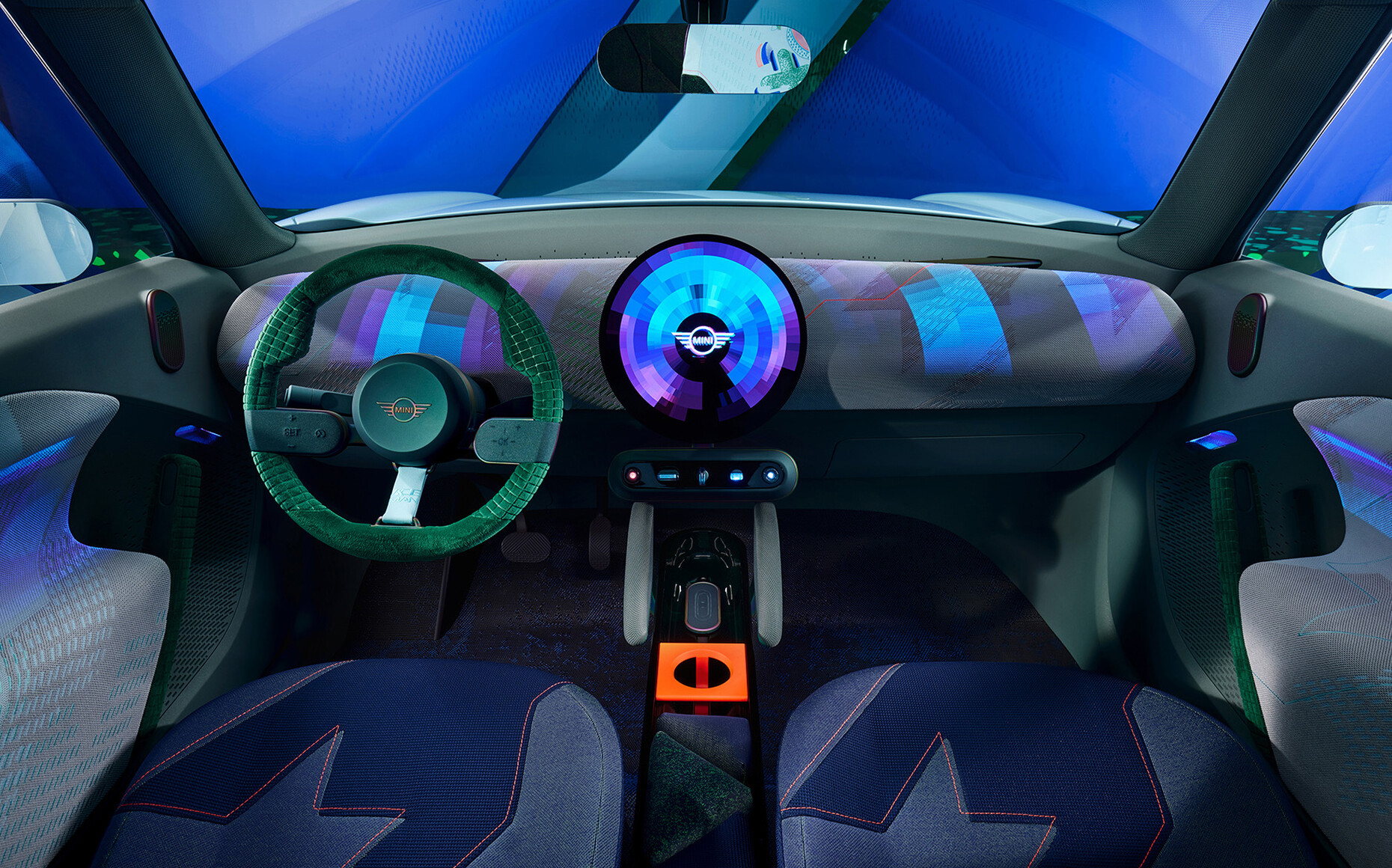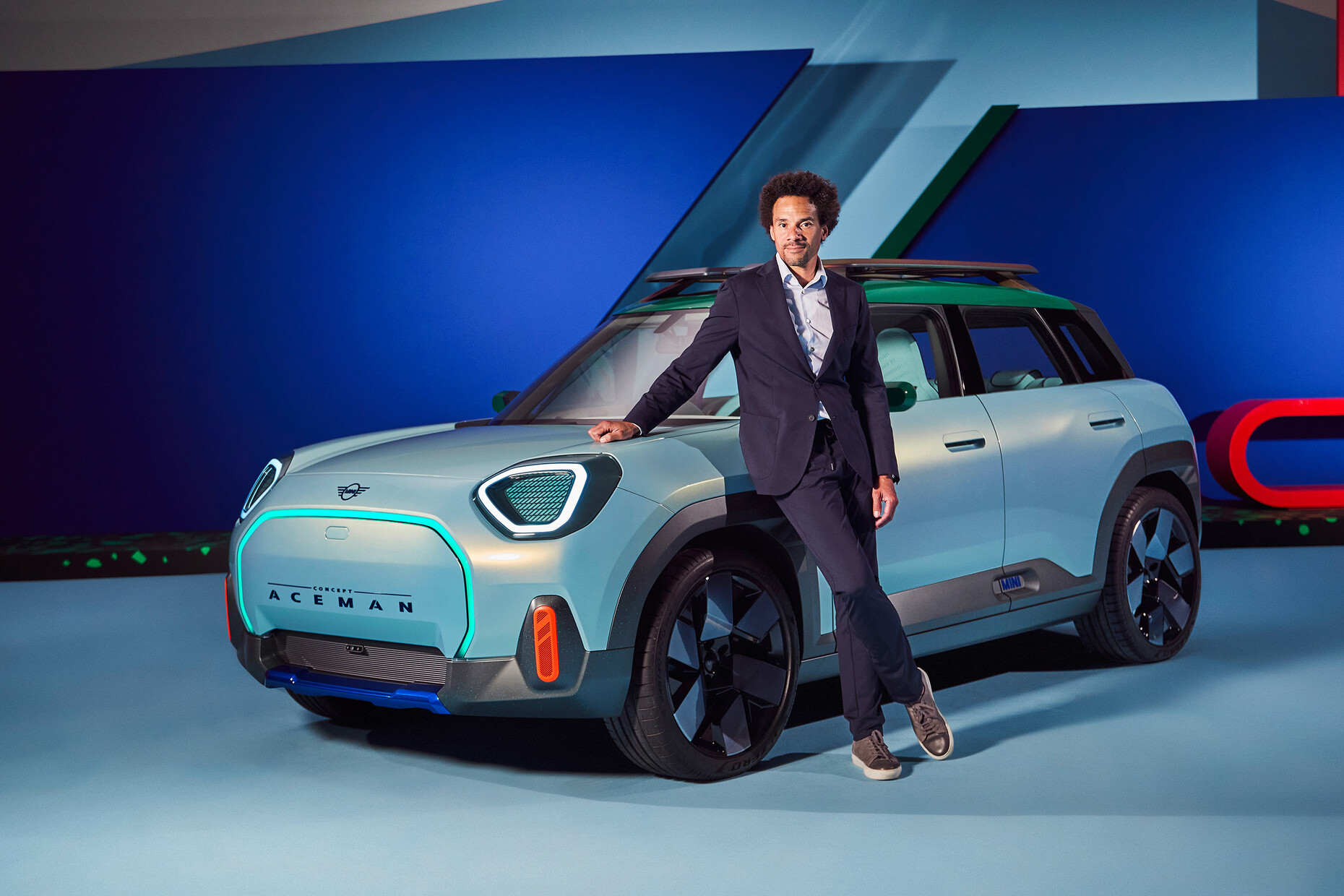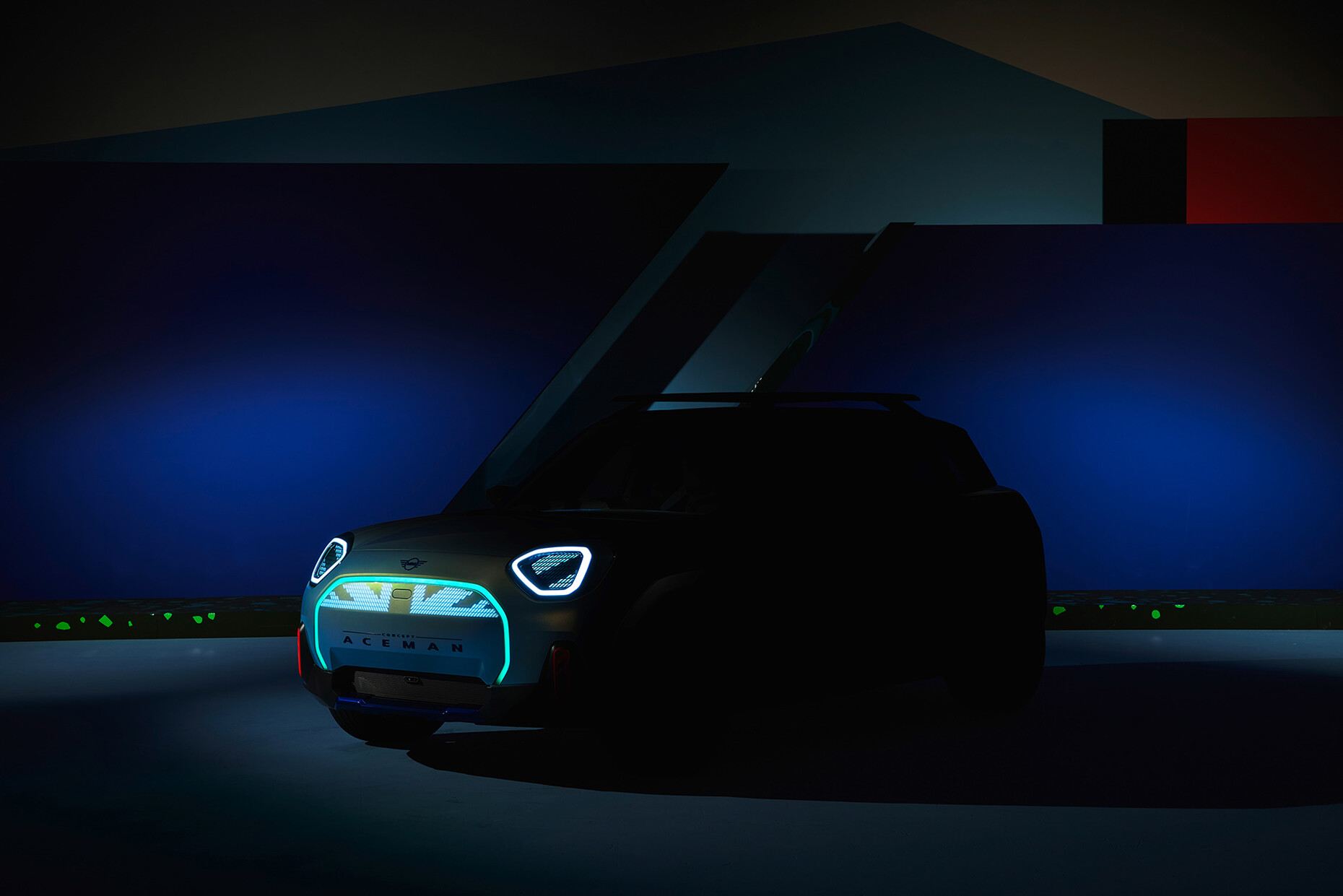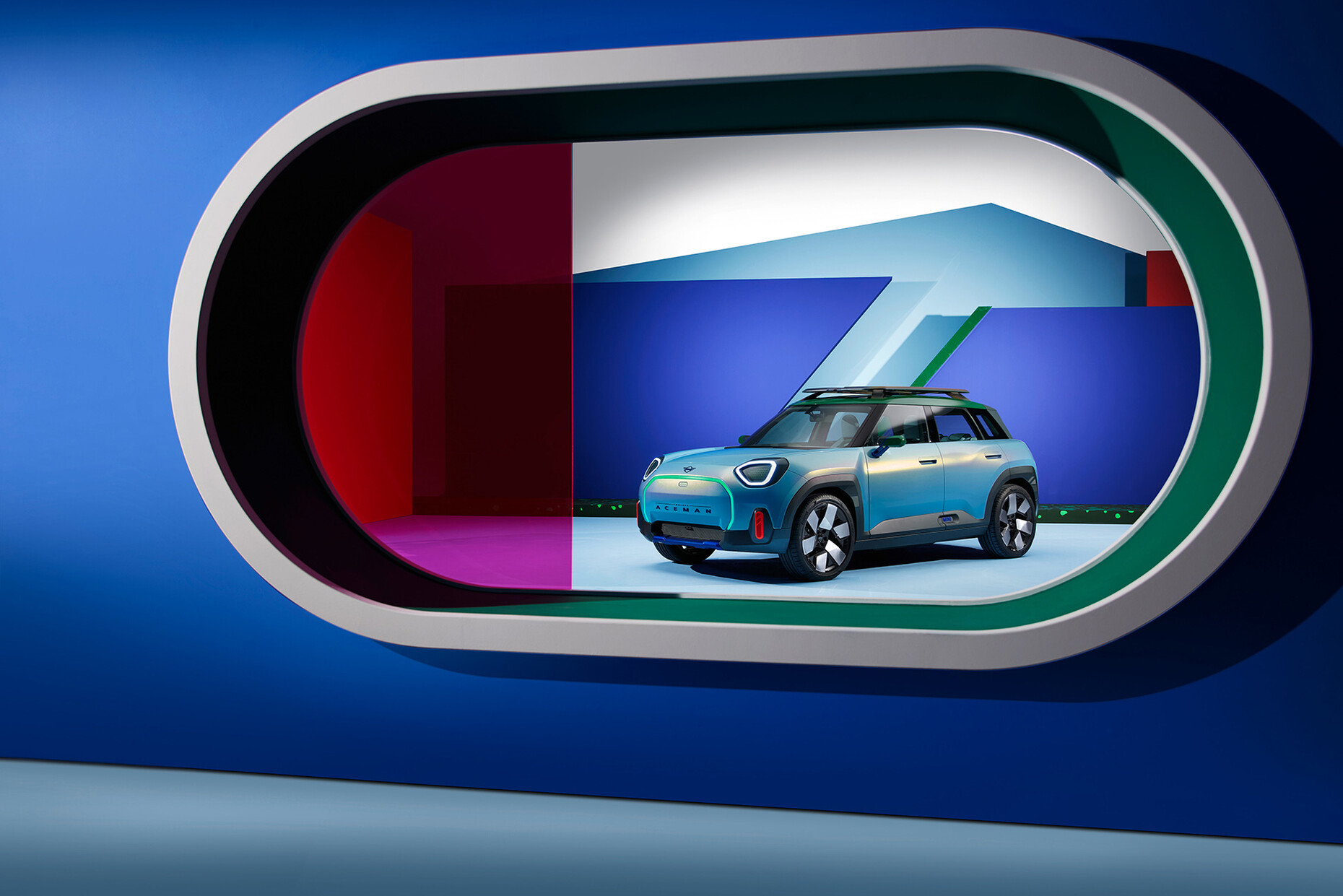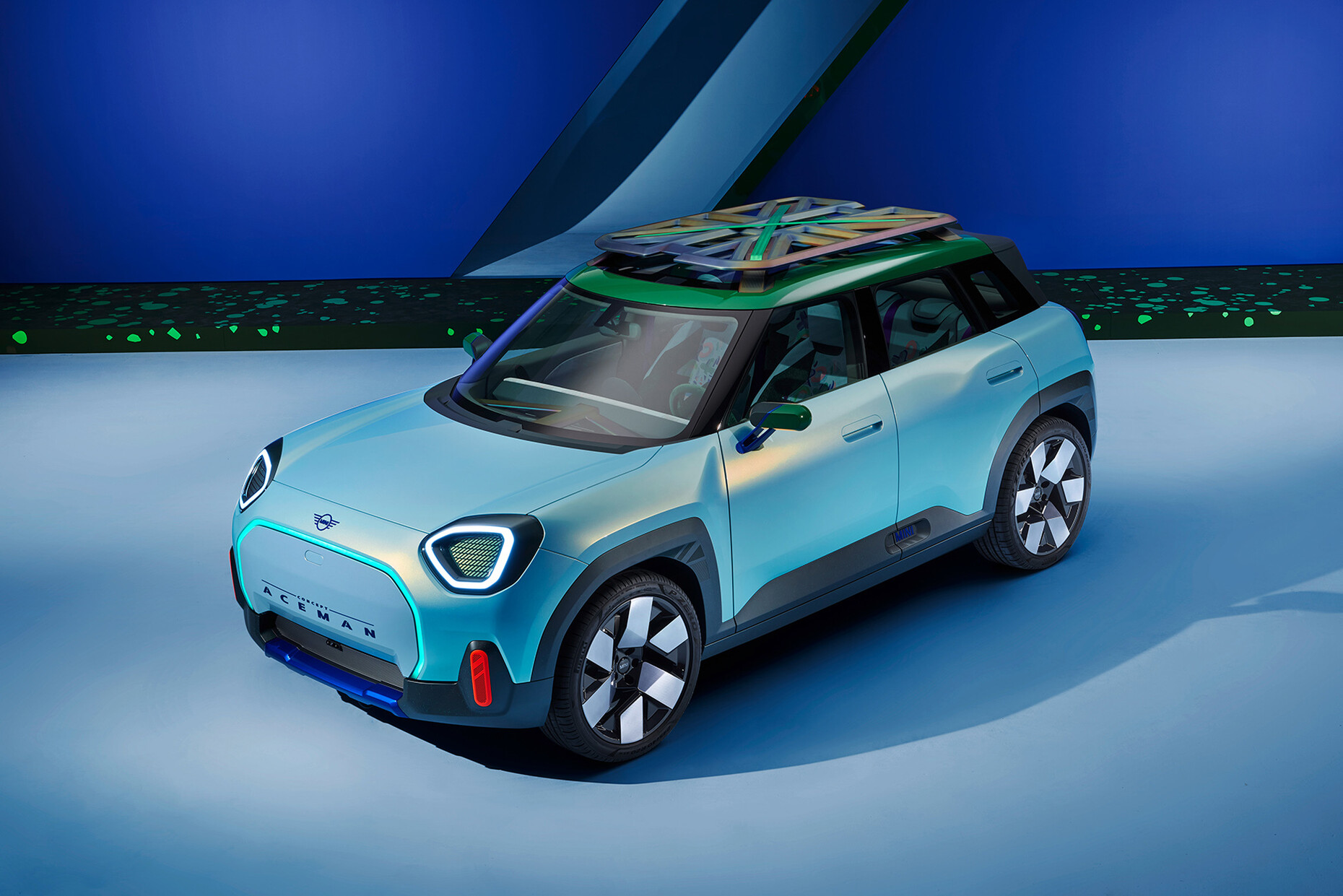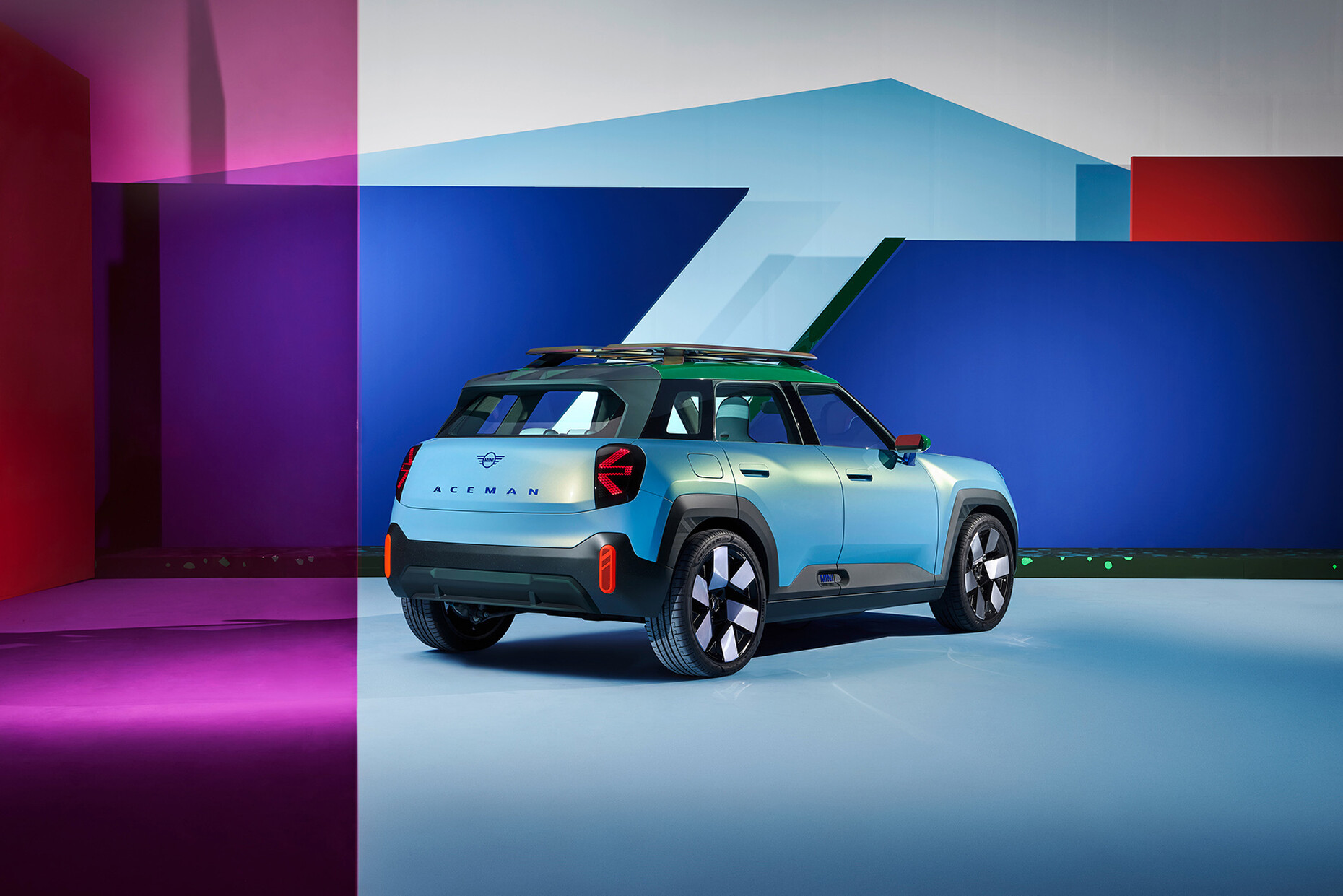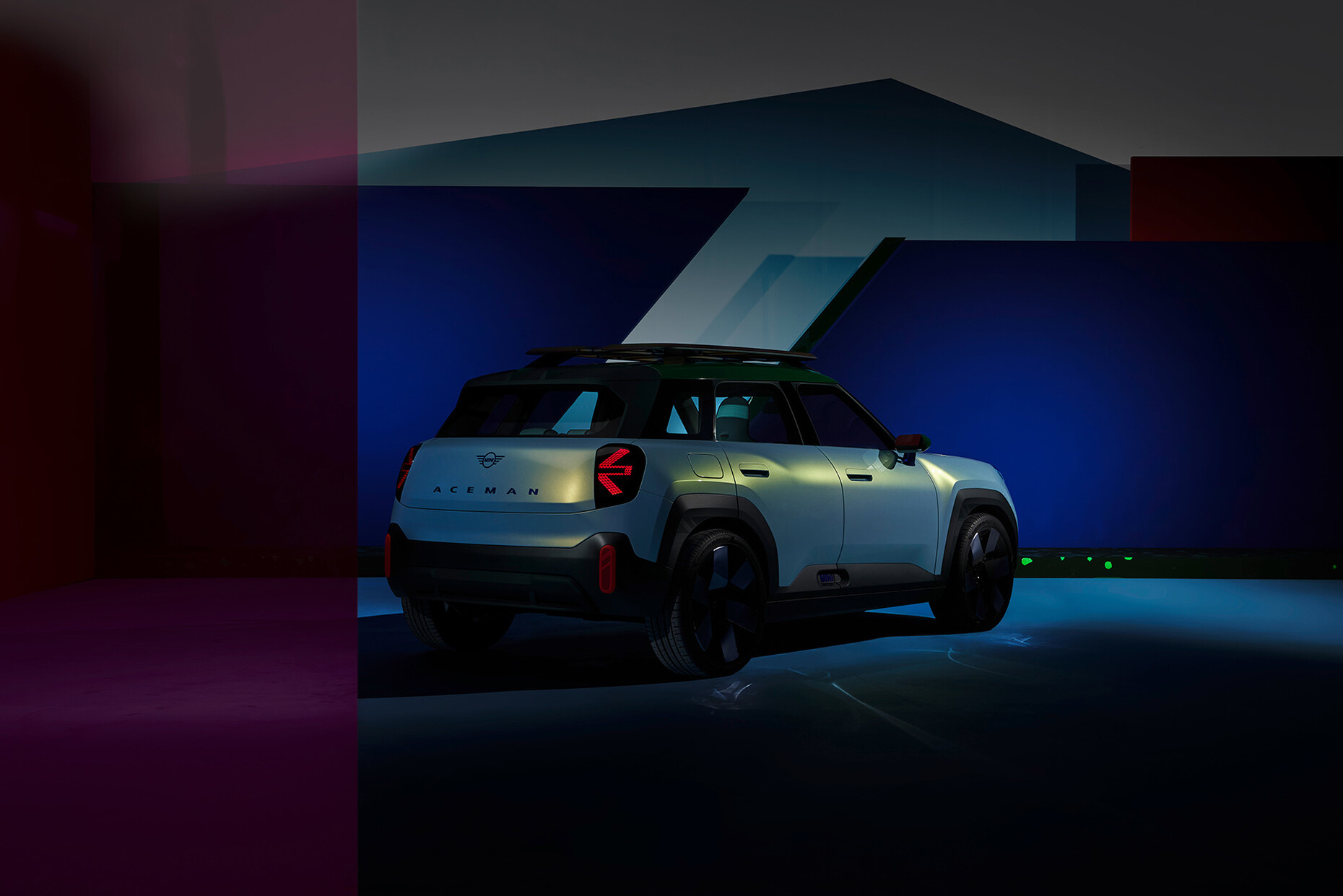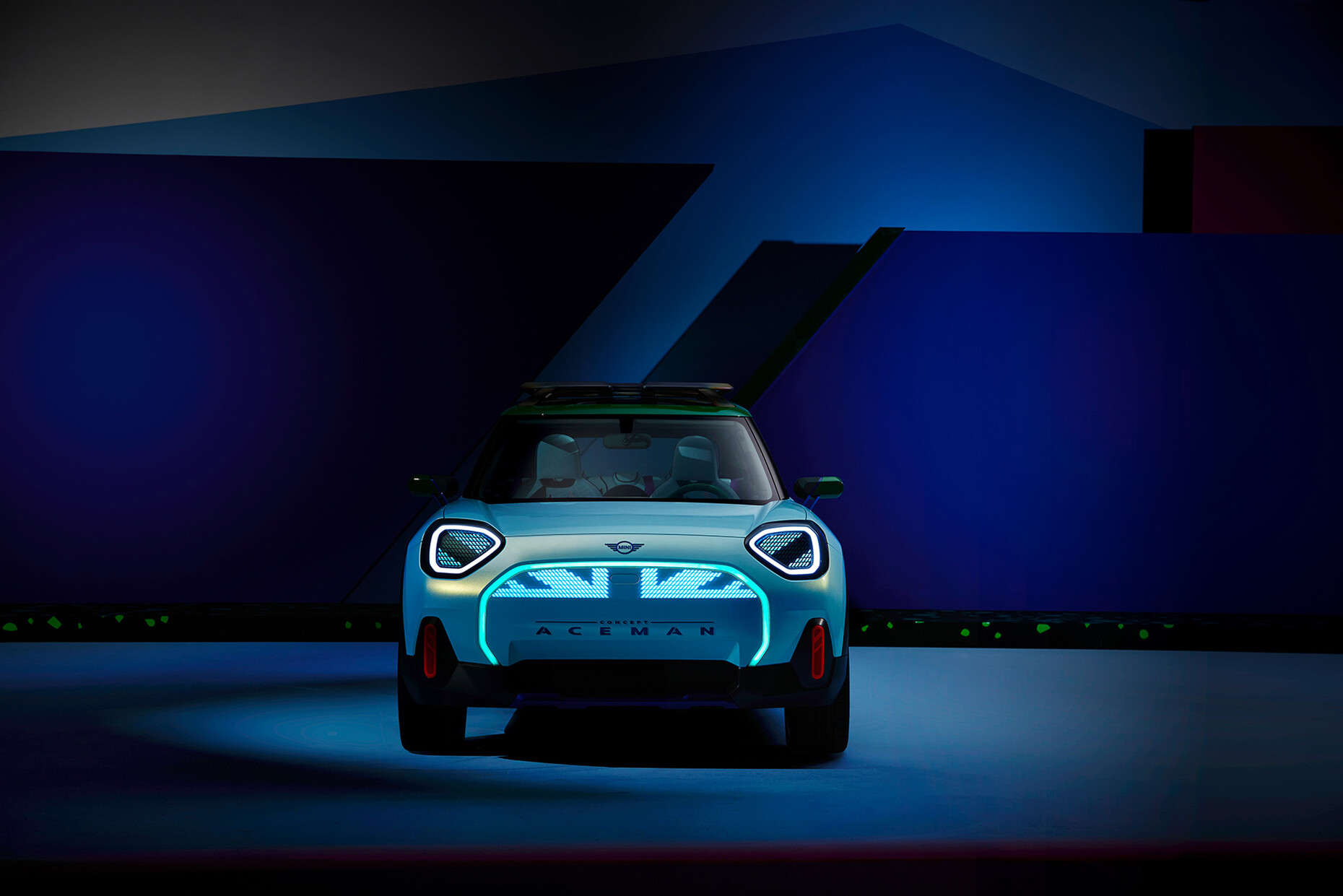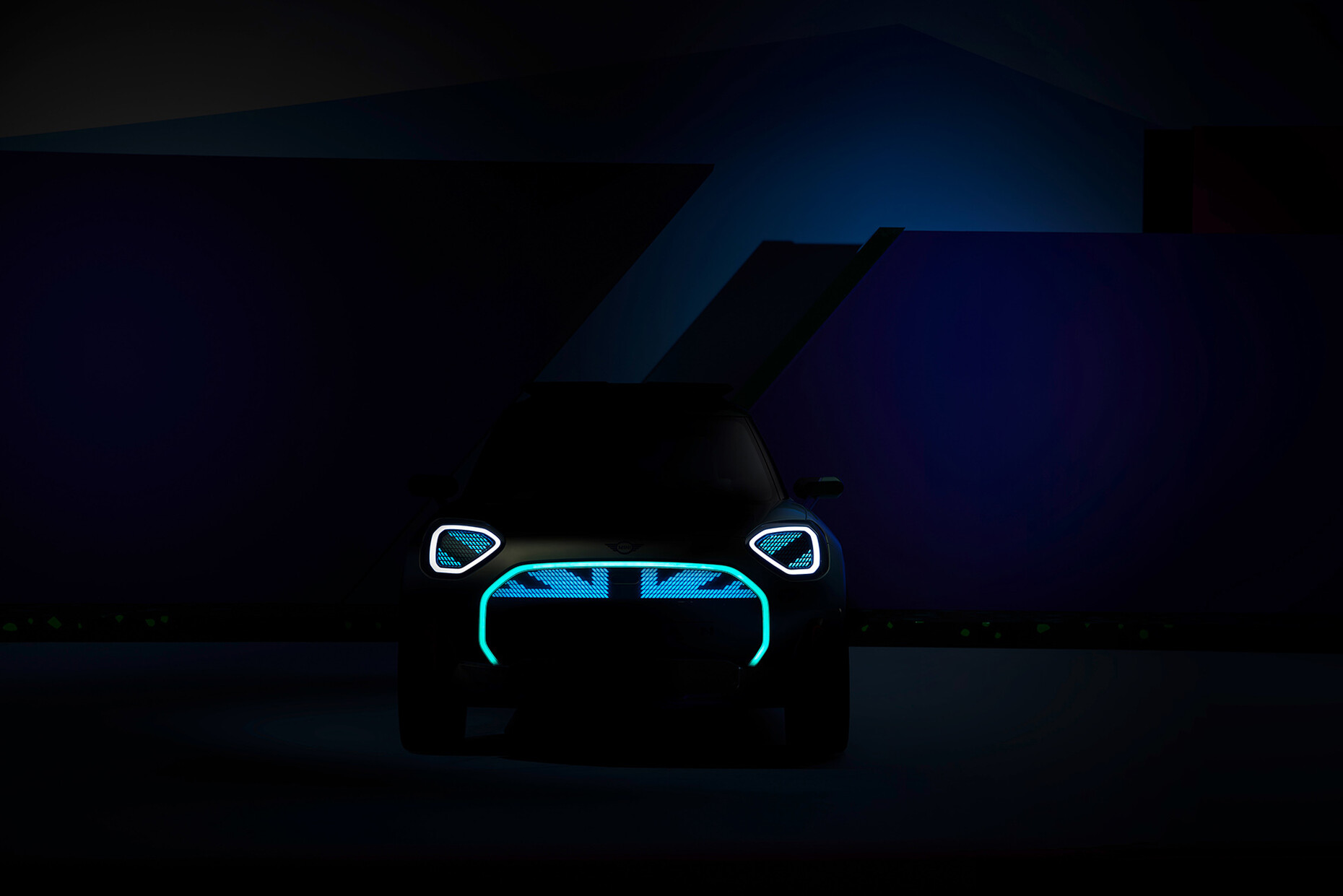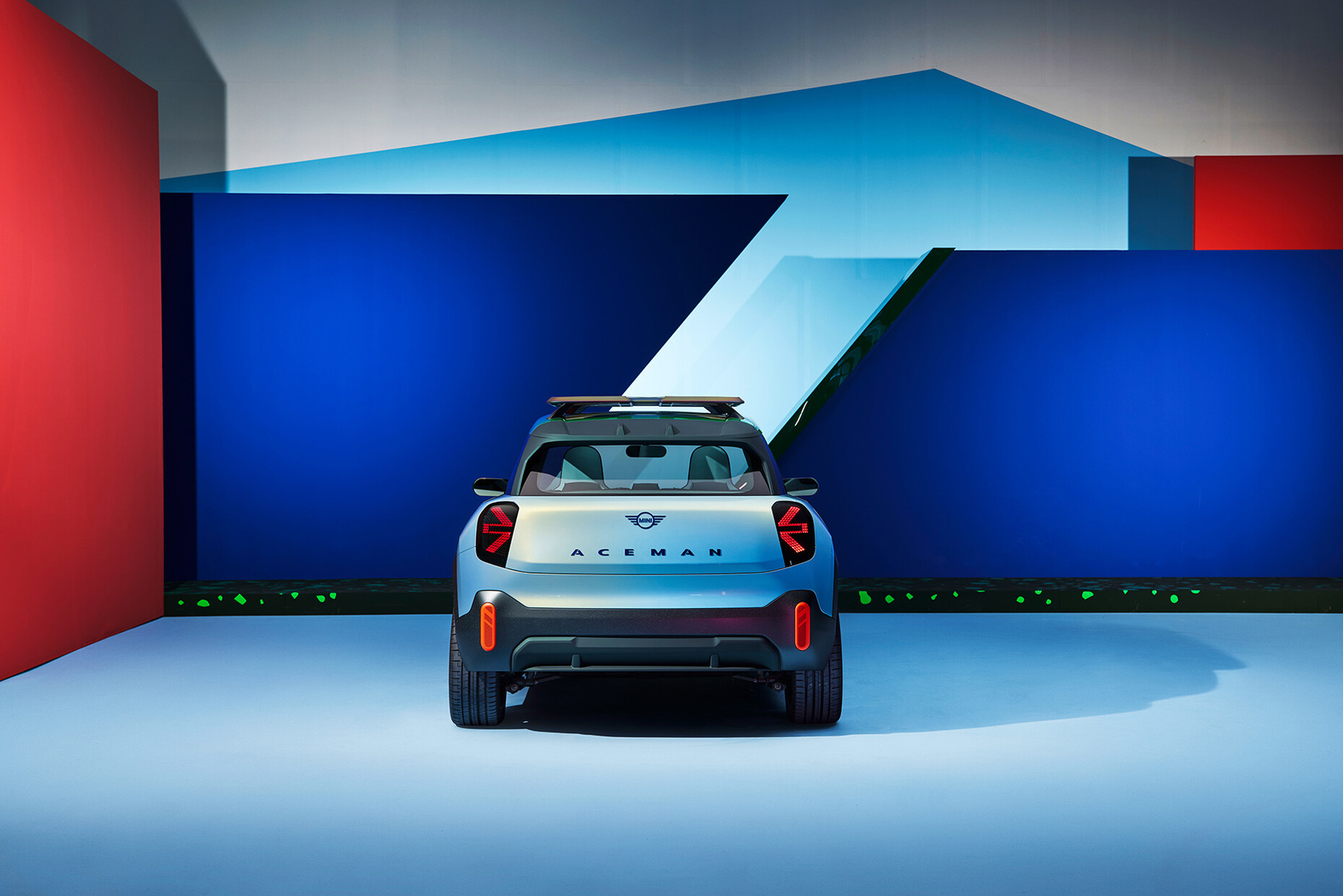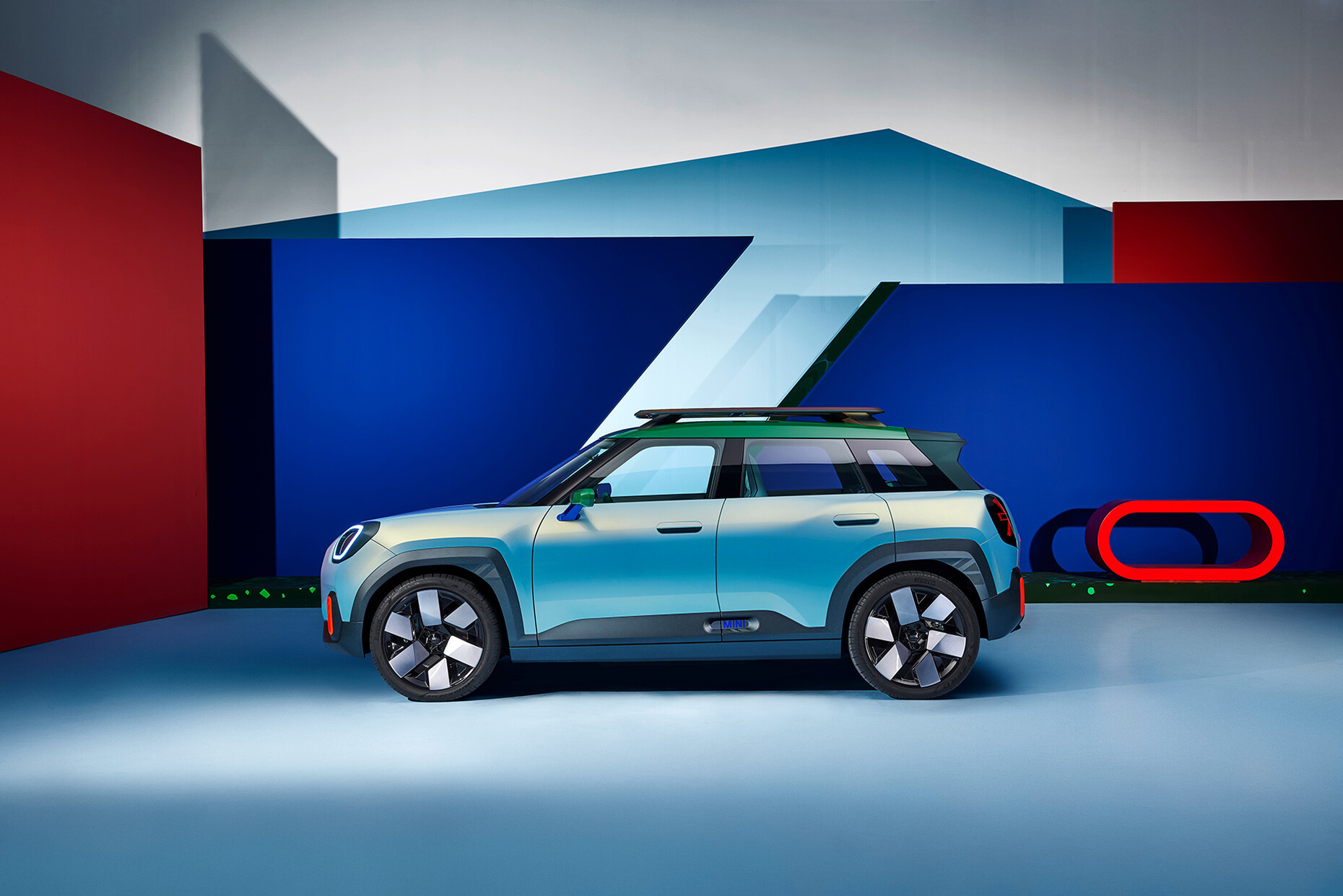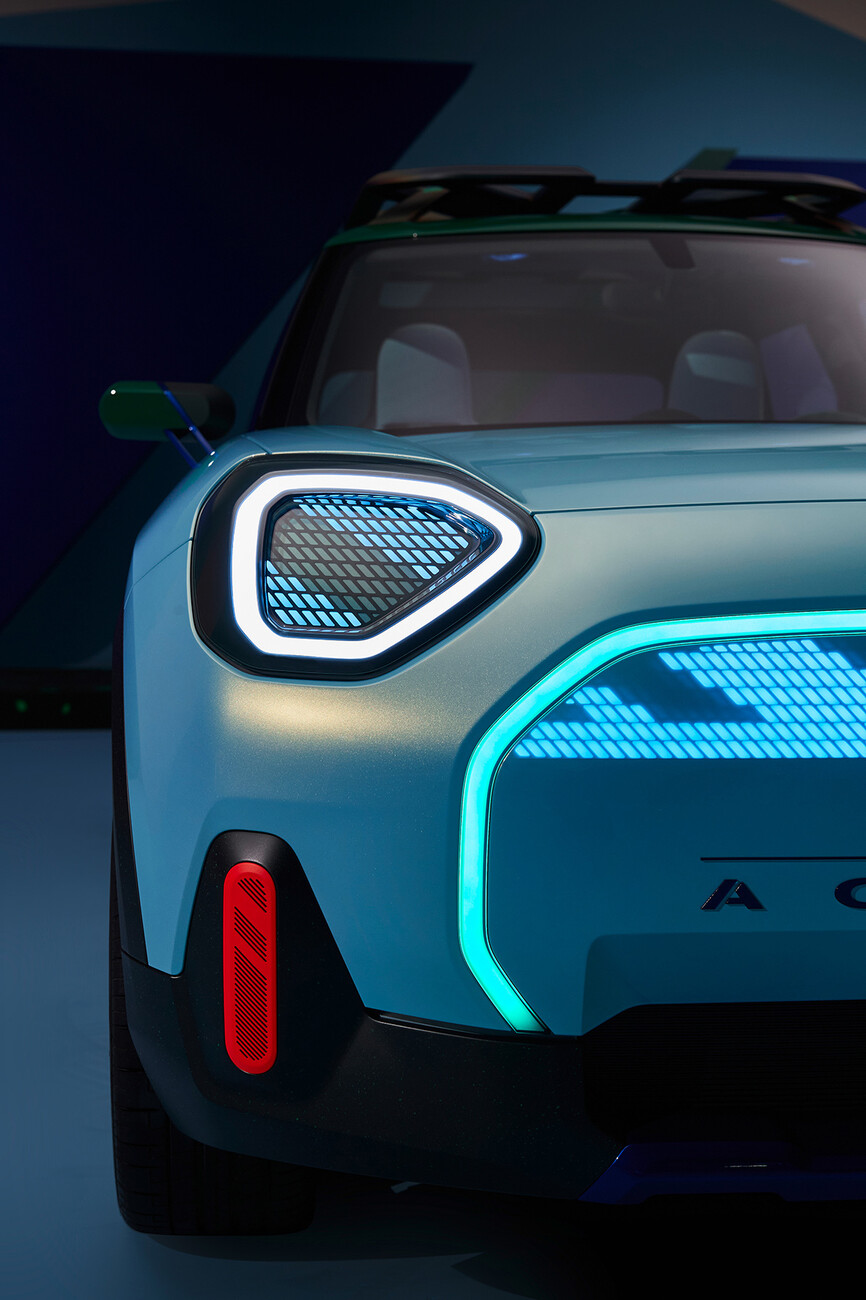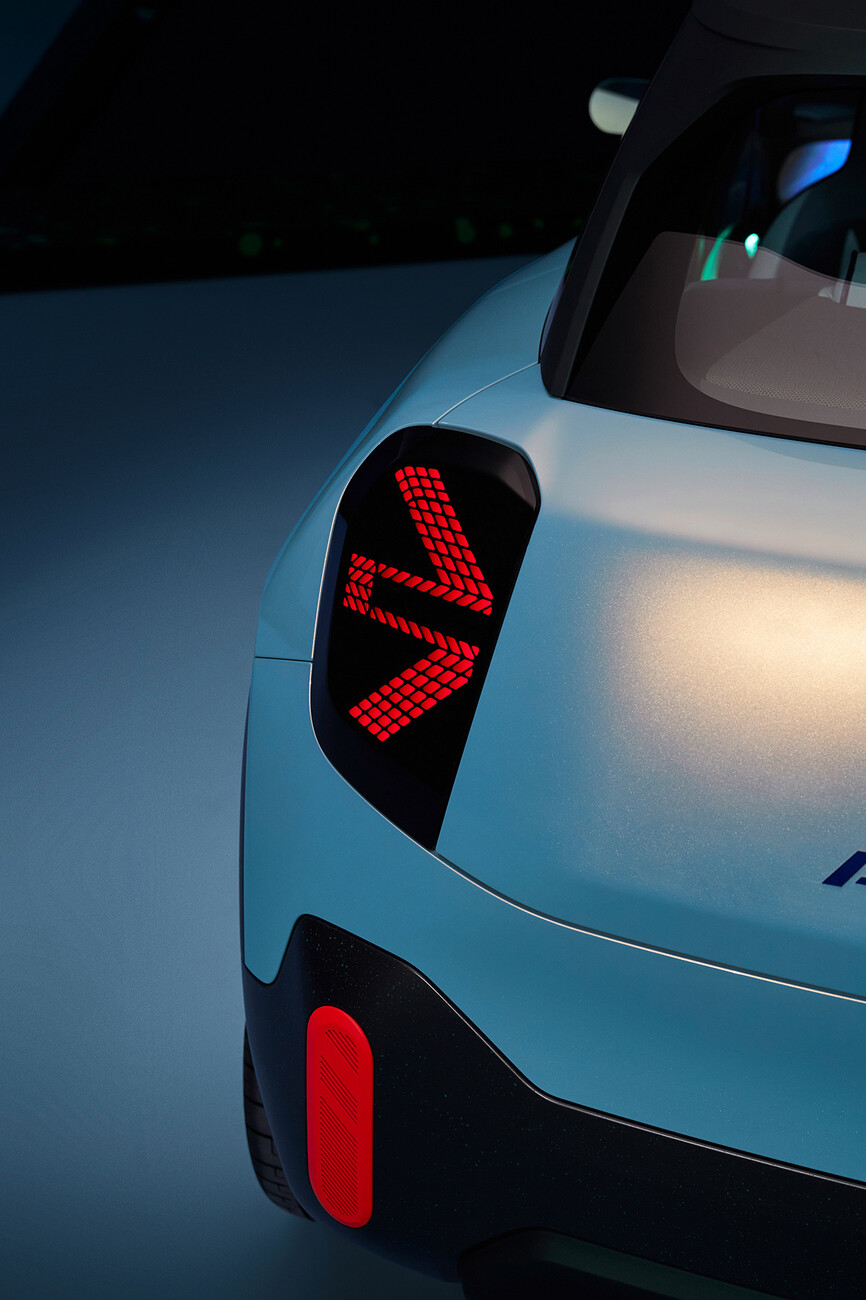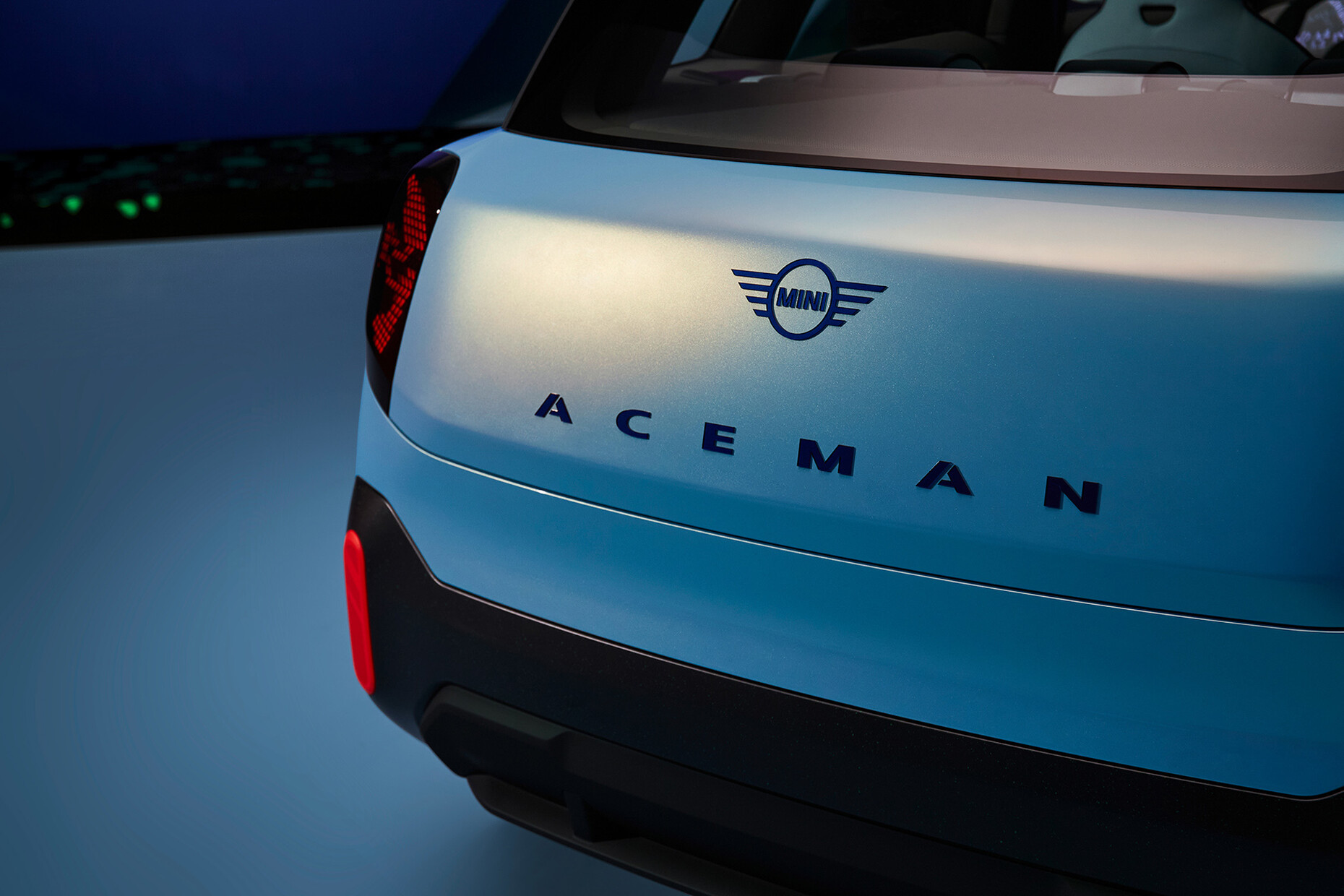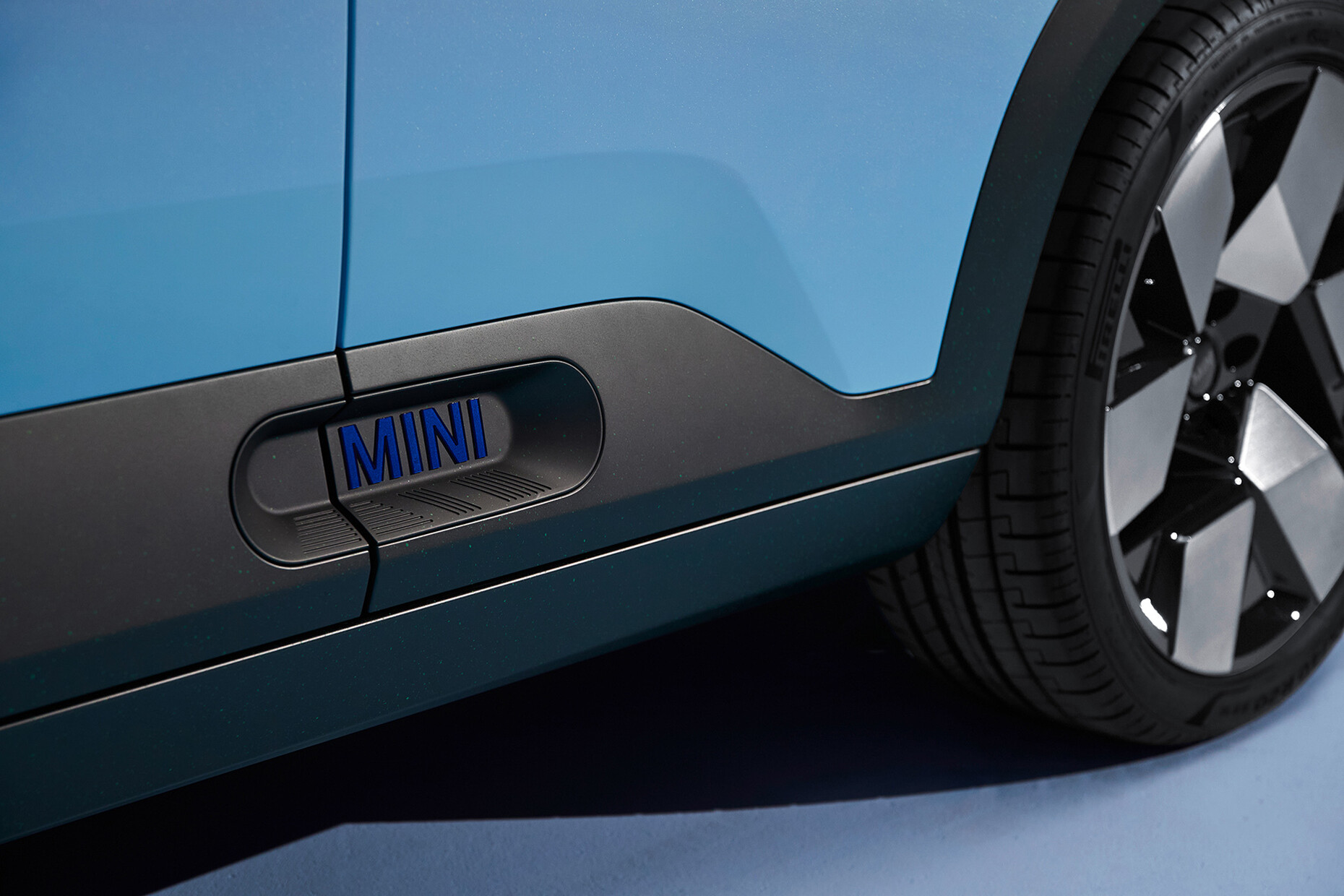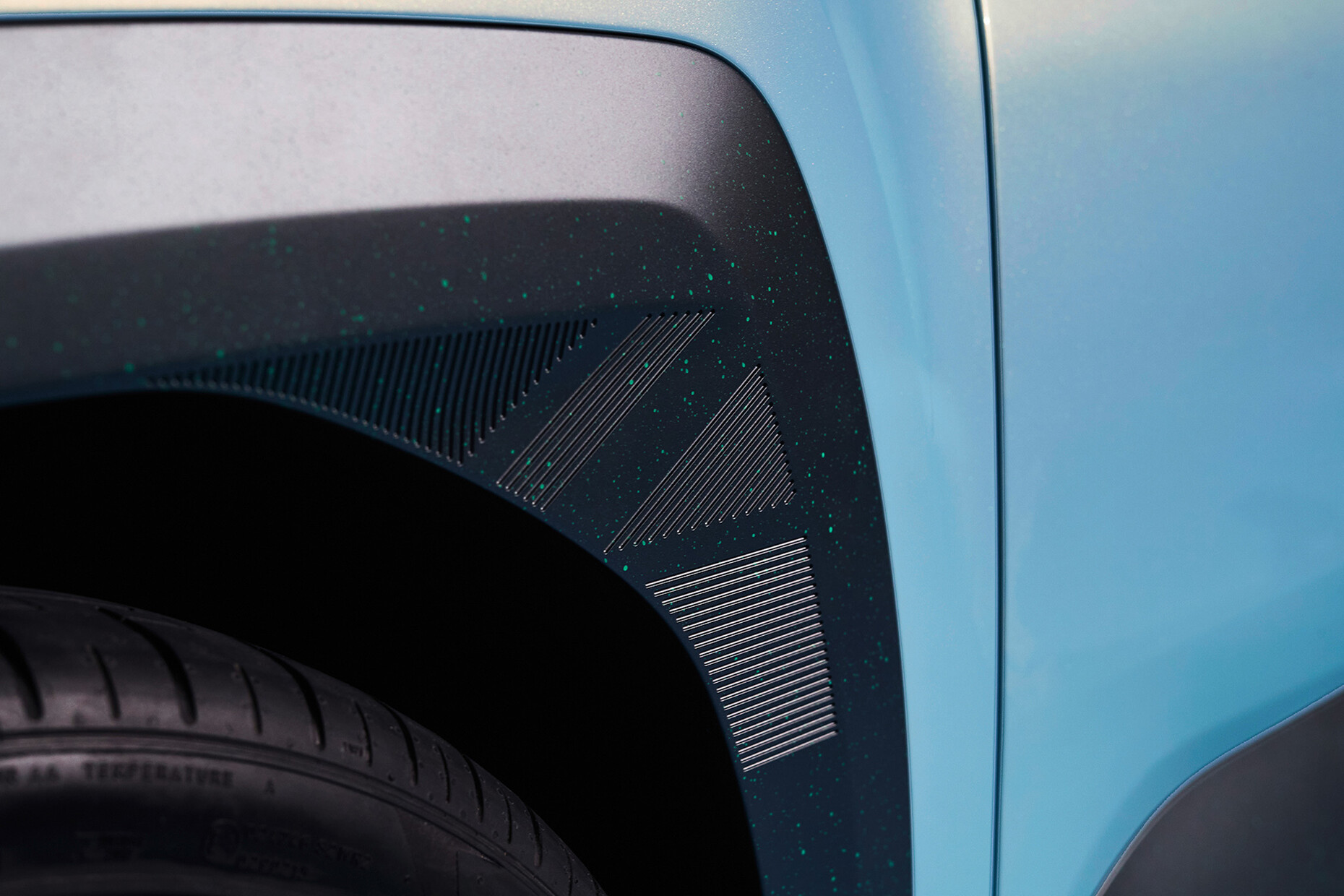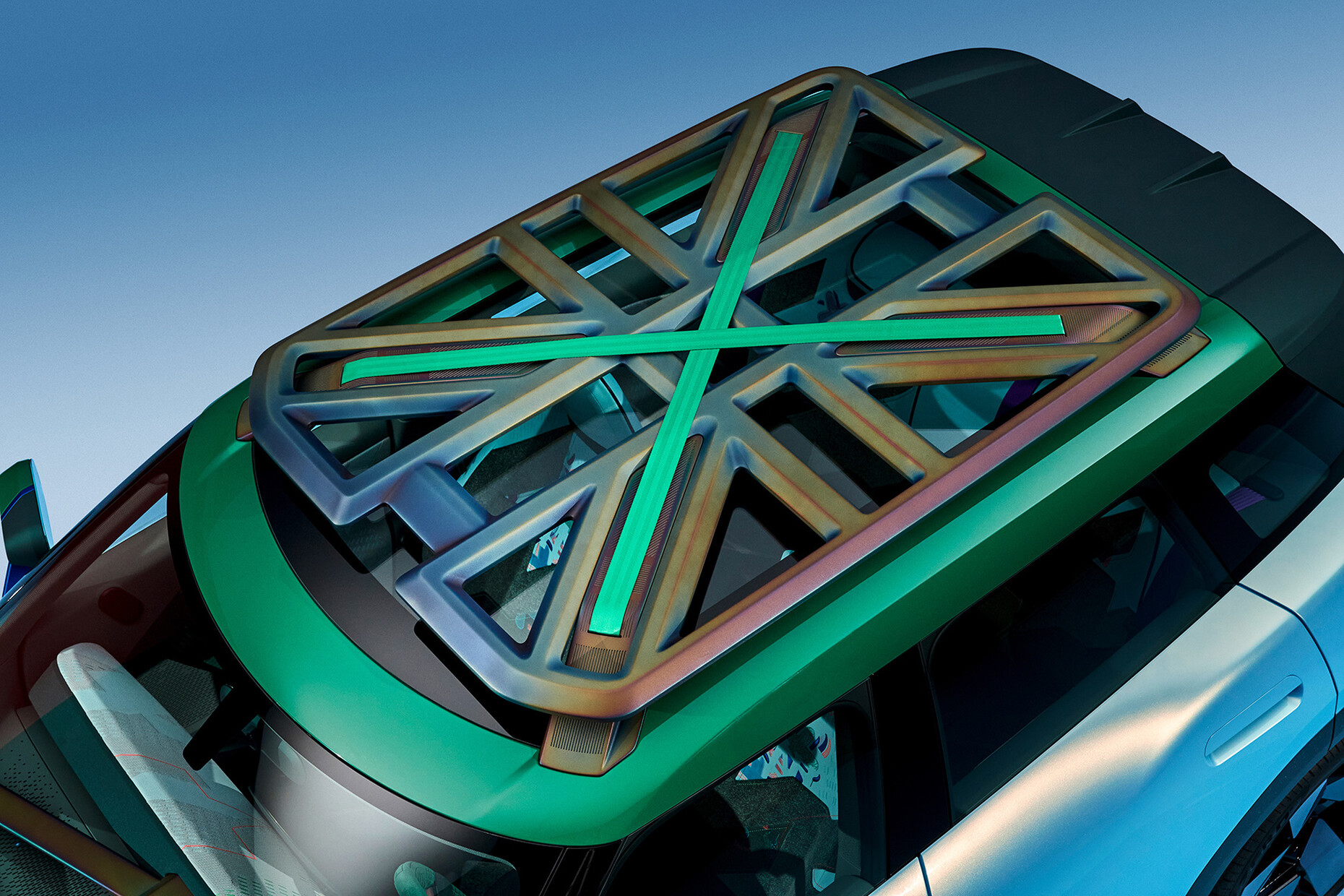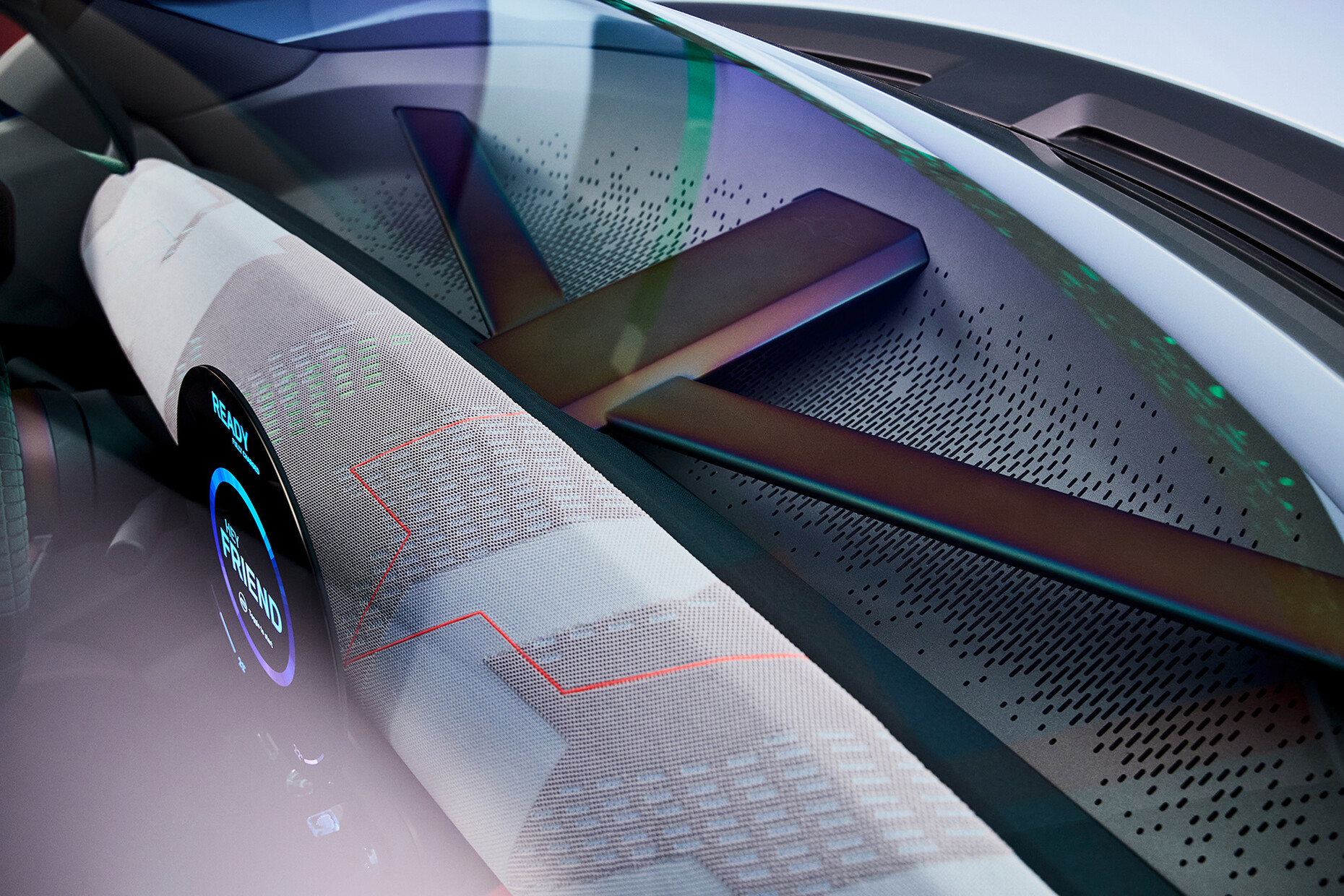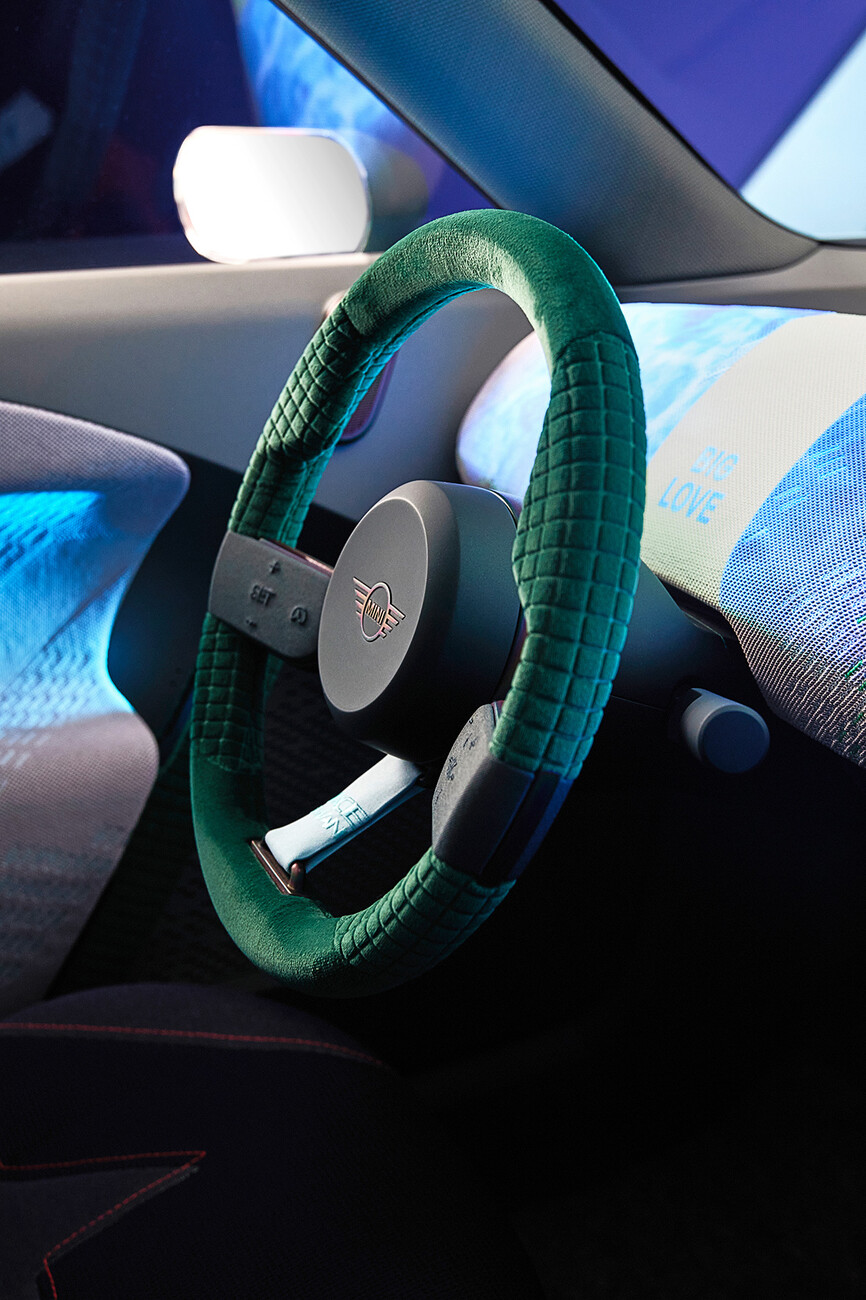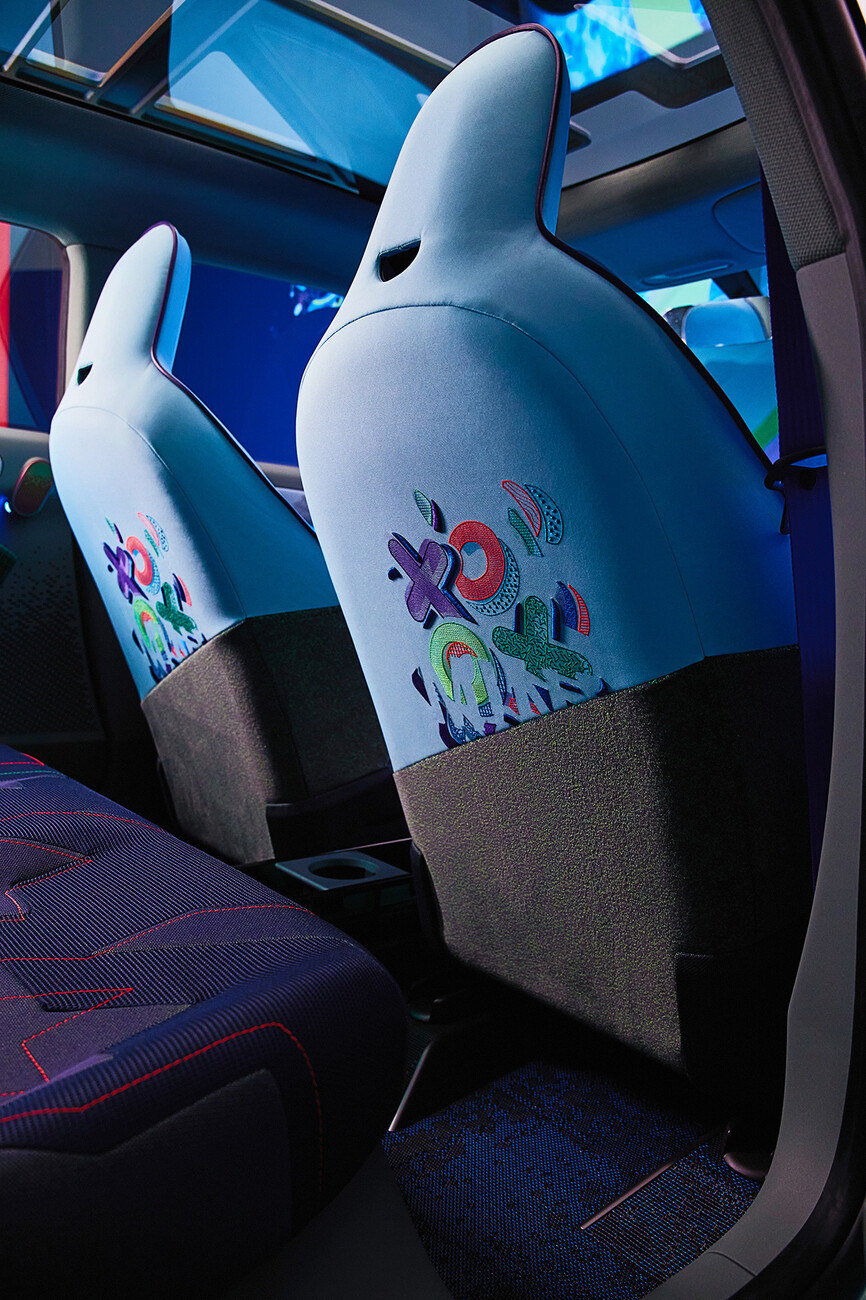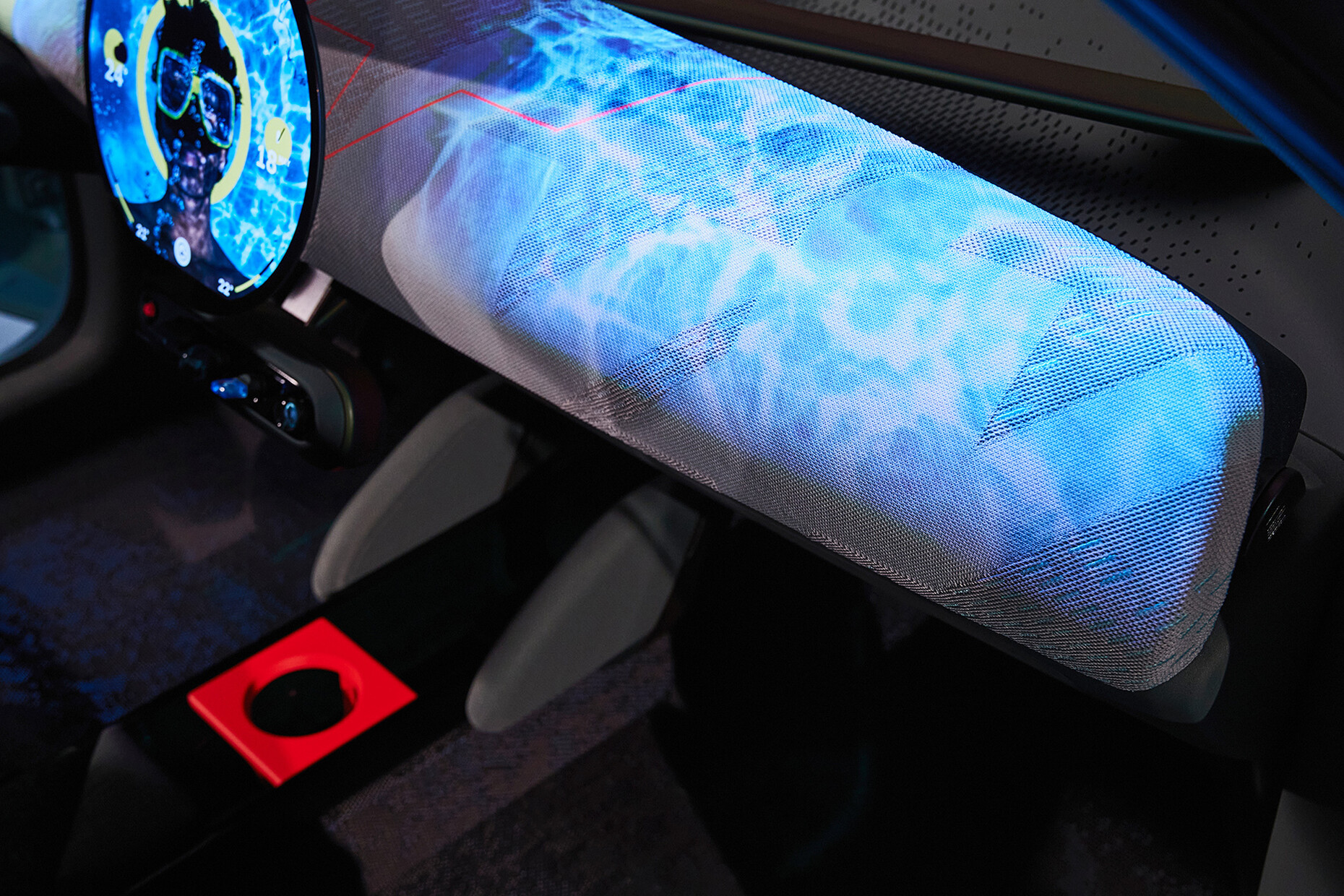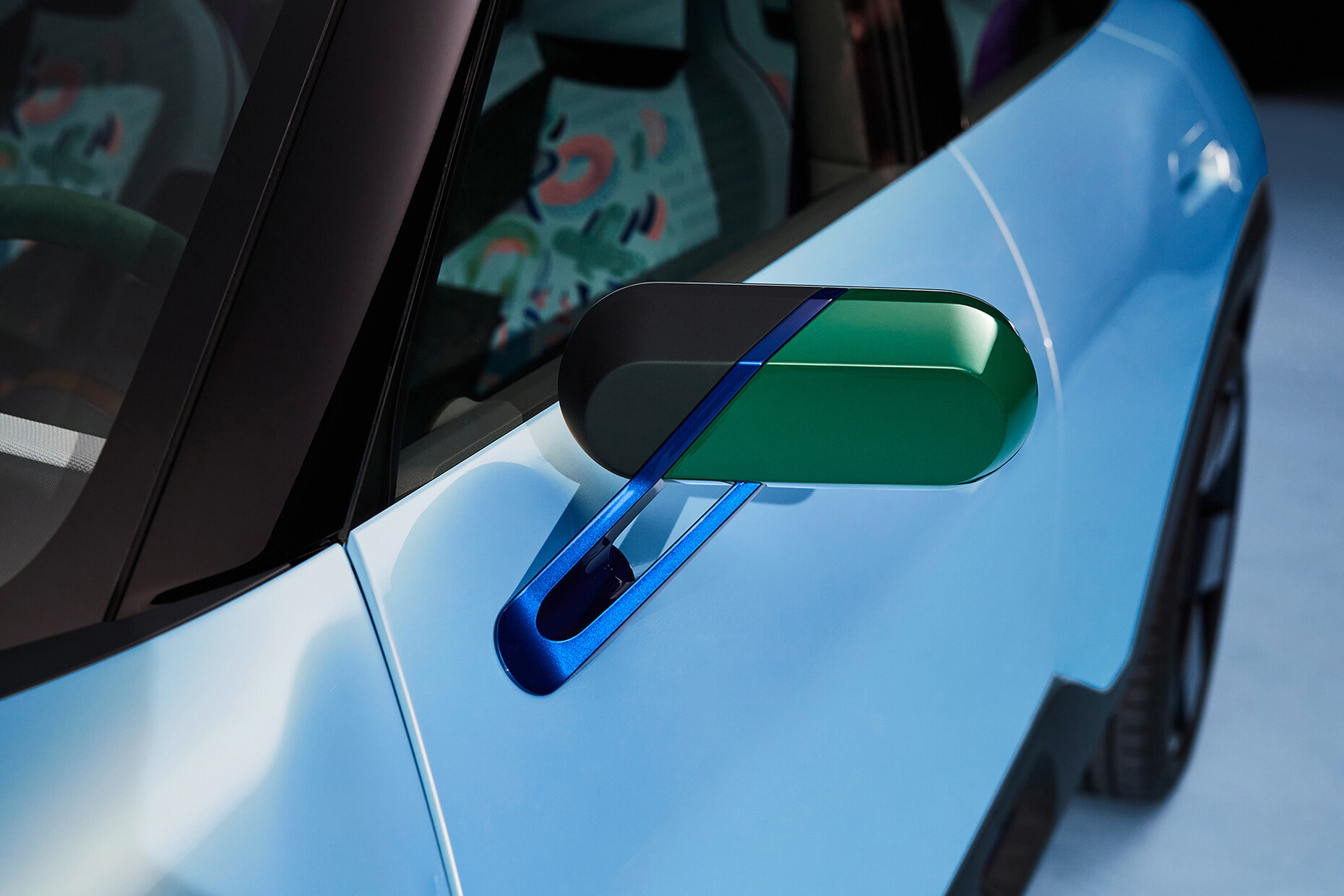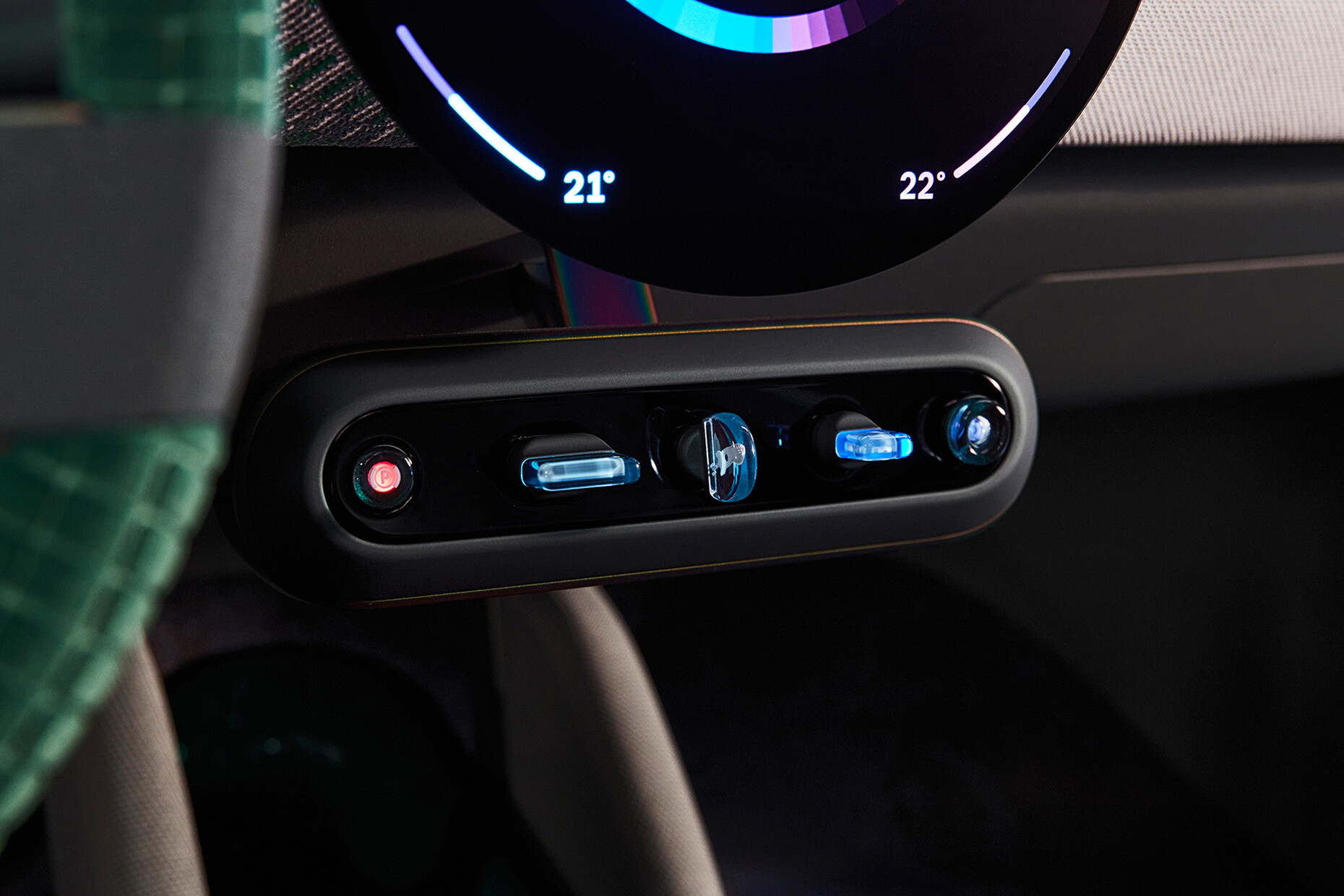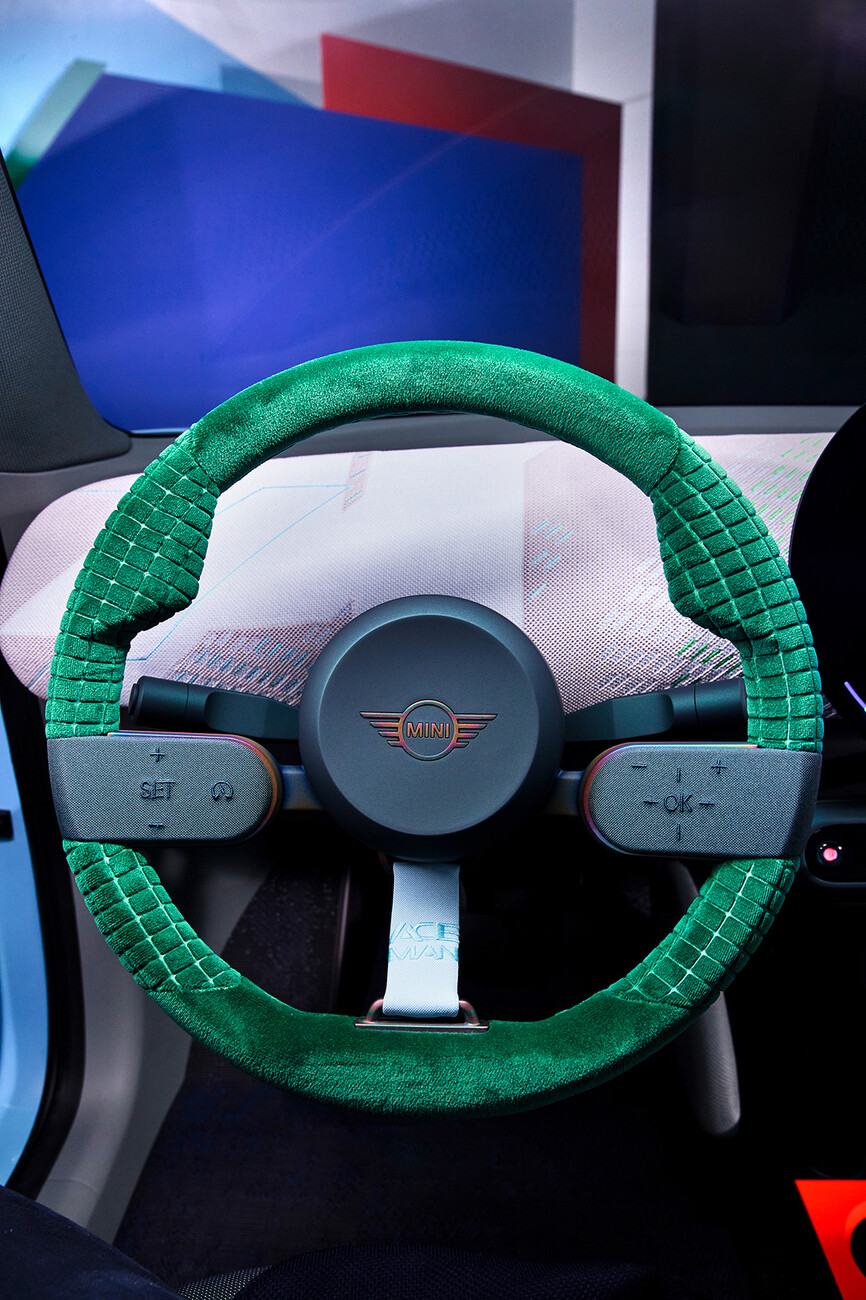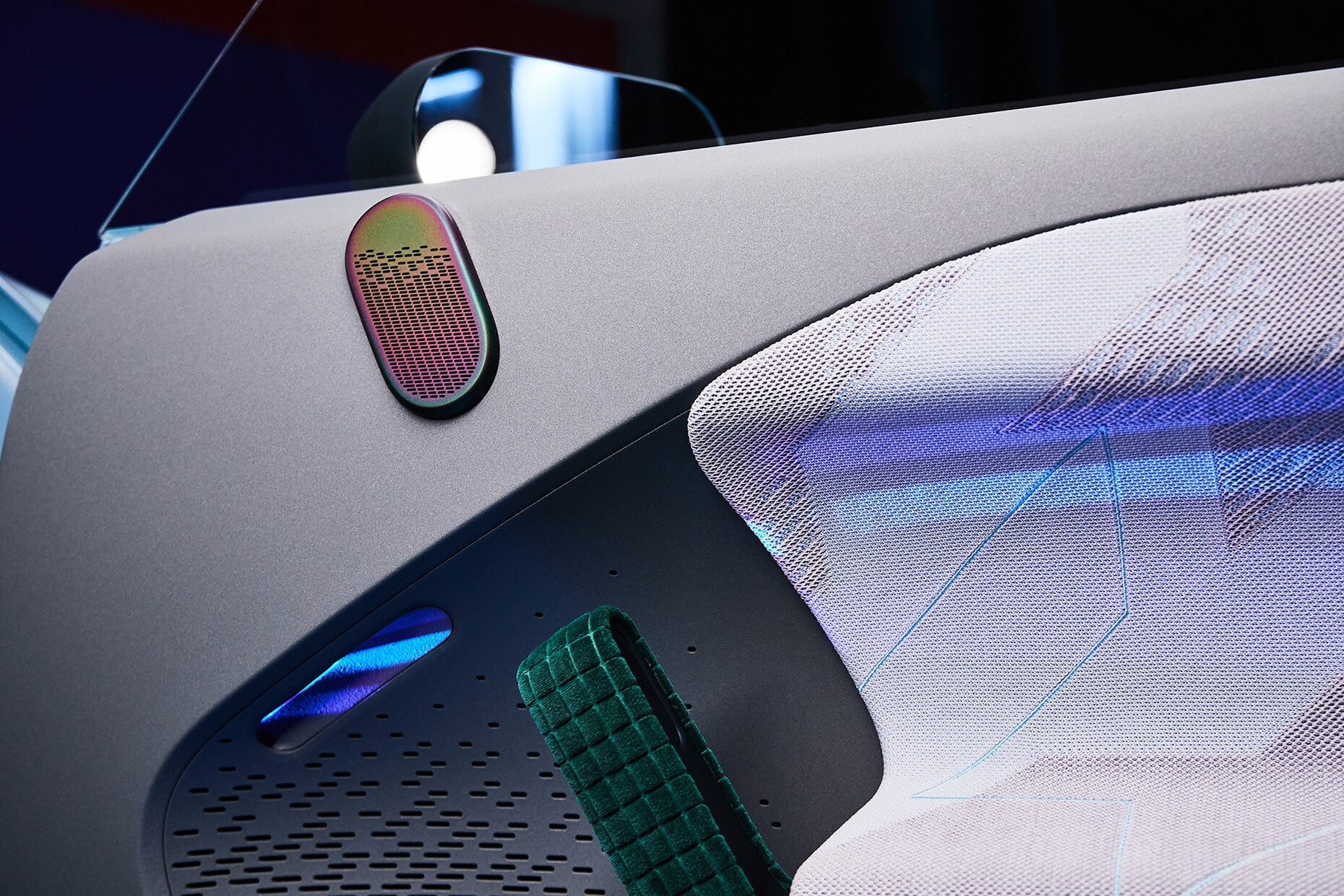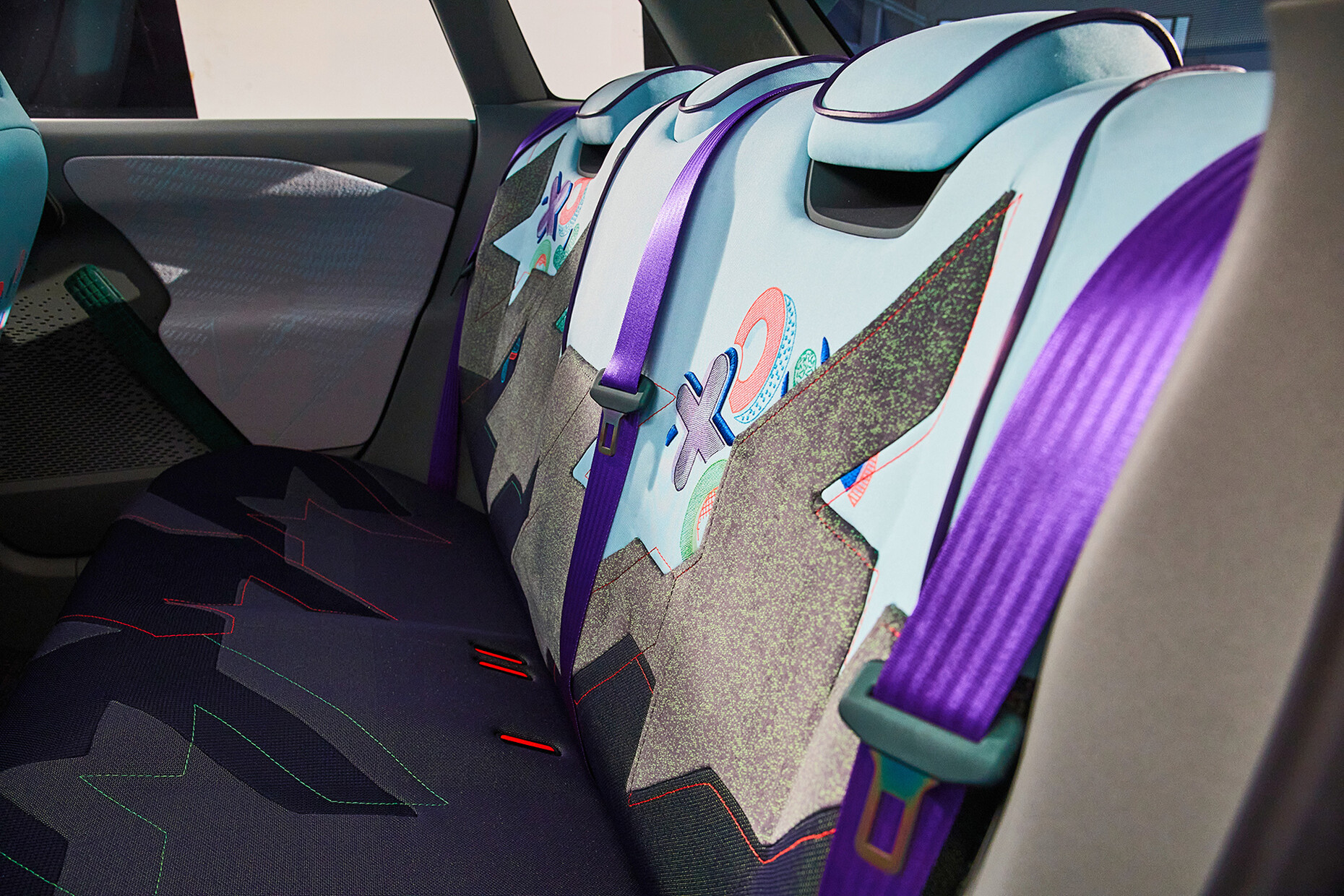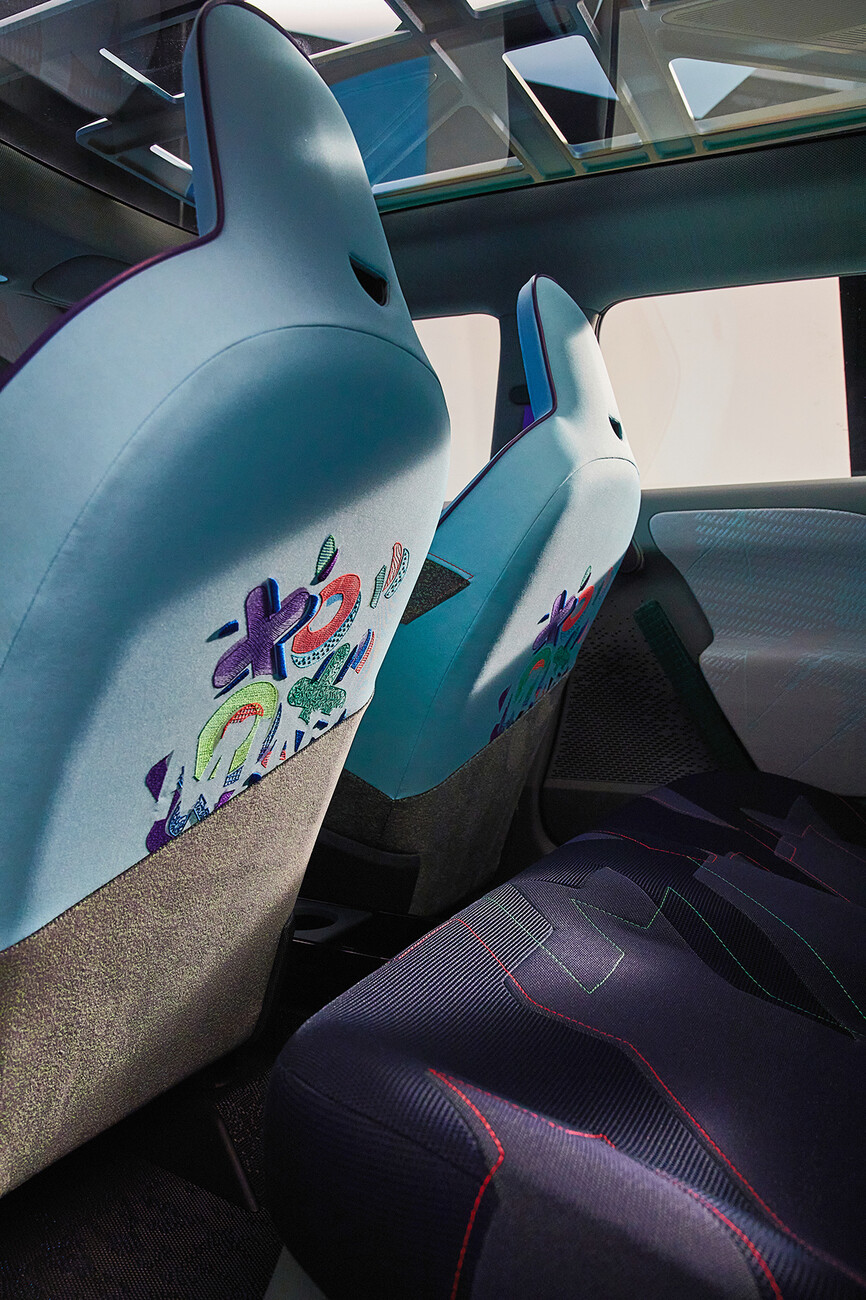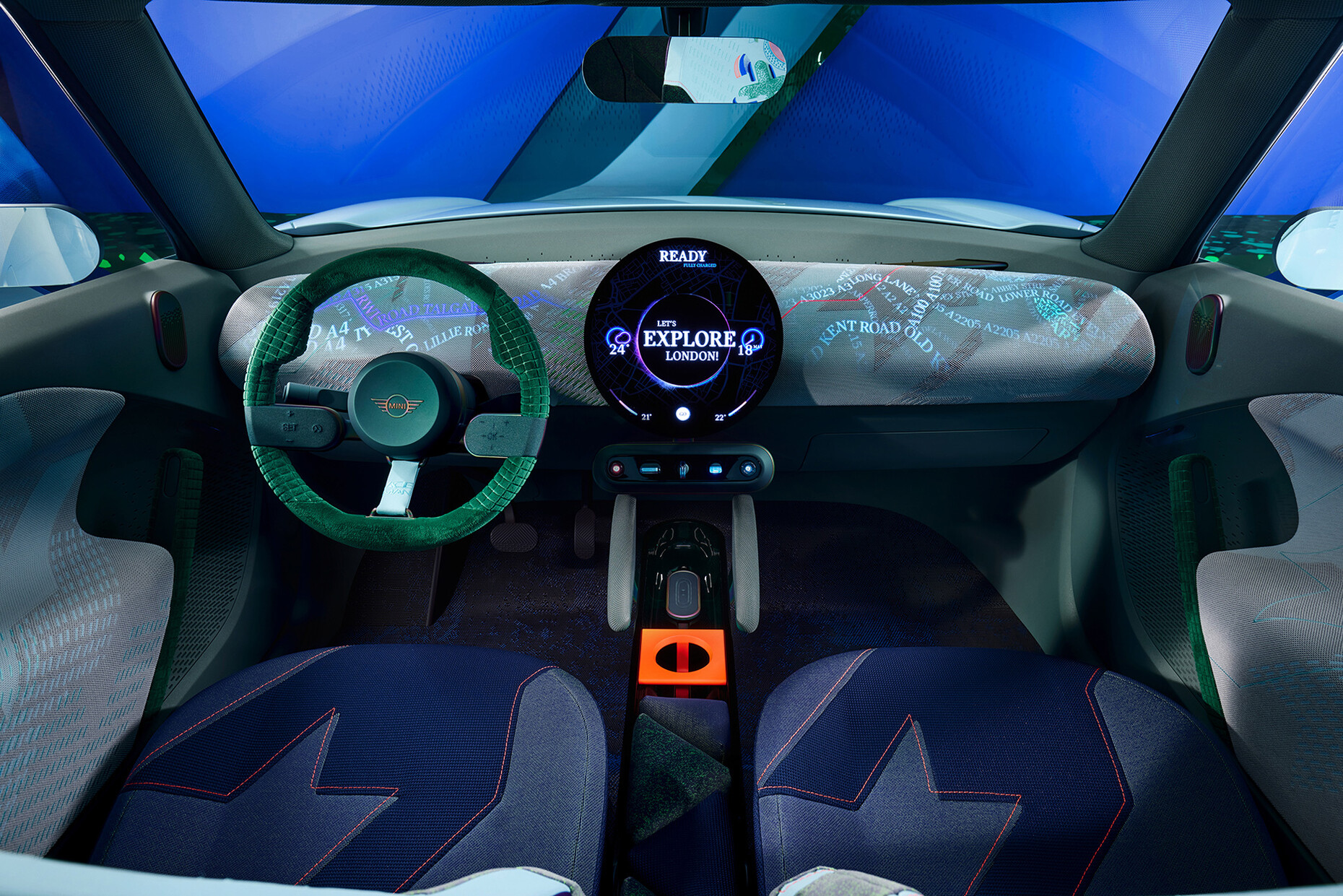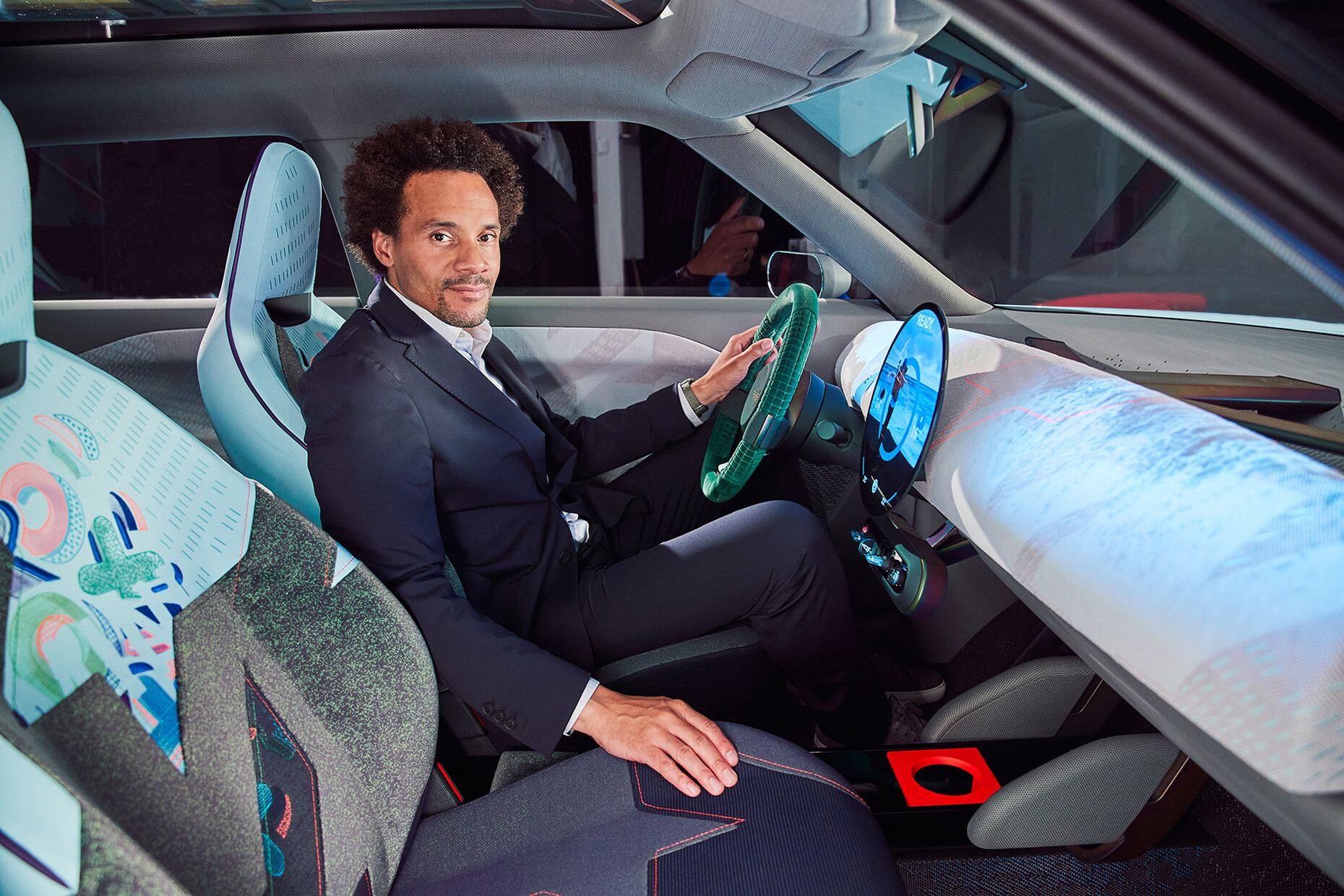A feast for the senses
“Good vehicle design has to work and at the same time make people want more. You should be able to feel at ease with the product whatever the situation – something that’s particularly important at MINI,” says Oliver Heilmer, Head of MINI Design, explaining the idea for the new “MINI Concept Aceman” concept car. Four doors, a large tailgate, a panoramic glass roof, short overhangs, and an external length of 4.05 meters are the features that first catch the eye. That said, the concept car’s body is divided into three sections, with fluid transitions to the glass surfaces. The all-round chrome trim of the previous models has fallen by the wayside, and instead the focus is on the 20-inch alloy wheels and the striking trim for the rear and front. The hexagonal radiator grill typical of an SUV is given eight corners by MINI. “Edgy, but emotional,” says Oliver Heilmer, commenting on the design. Also angular for the first time is the shape of the headlights with matrix LED units that enable different lighting scenarios. On top of all that – quite literally – the “Aceman” also gets a roof rack, so it’s well equipped for touring the city and still small enough to fit into narrow parking spaces.
Another refreshingly different feature is the shiny metallic paint finish of the “MINI Concept Aceman” in Icy Sunglow Green, a light turquoise with a golden undertone and neon green splashes of color that looks different depending on the incidence of light. In contrast, the roof and part of the rear-view mirror trim are painted in classic dark green, British Racing Green, which is repeated on other elements of the car – for example the edging on the lower rim of the body. Color accents are also set by the underbody guard elements in royal blue and the paint finish of the speakers at the rear and front in pink-orange. It’s a bold interplay that is a marked departure from the MINI’s previous design. “The ‘MINI Concept Aceman’ has a geometric design language with angular headlights, not the classic body. That’s where it might be polarizing. The very first MINI was also polarizing, but then went on to become a success in its own right. When you’re aiming to capture the spirit of young people, you need to break with a few things. And that’s what we’re doing with the concept car, albeit with quotes that show what makes the MINI a MINI,” says Oliver Heilmer. Extensive market research preceded the concept, with the result being that human sensation should be the focus as much as possible in the design of a car. “In the final model, customers will grasp the idea we are currently showing immediately. The concept exaggerates, but there are no false promises,” says Oliver Heilmer.
One symbol that is repeated as you walk around the car is the Union Jack, the national flag of the United Kingdom. This can be found in abstract form in both the rear and front lights as well as in the wheel arches and the roof rack. Combining the heritage, the very origins, of the traditional brand with a creative look to the future – this approach characterizes the new concept car from MINI. Chrome has also been banned from the design in favor of an environmentally conscious format, and instead of the classic weld seam, a diagonal contour runs below the A-columns. “The true art in vehicle design is basically getting the proportions right, even if there’s a lot going against that technologically. The proportions decide whether the car subtly feels ‘right’,” suggests Oliver Heilmer.
MINI also places great emphasis on interaction between the car and the user, which it supports with numerous playful elements: When a person approaches the car, a sensor-based animation is activated that is visible on the LED units. In addition, a sound comes from the loudspeakers that changes with the movement of the person and their distance from the car. When the car is unlocked, the animation also generates a wink. The real show, however, awaits in the interior: Thanks to the electric drive, there is a surprising amount of space for a total of five people. And there’s plenty for them all to see, because the digital interior experience announces itself with cheerful sounds as soon as the driver’s door is opened – a melodic “color burst” that is accompanied by a multicolored projection in the interior. Every functional sound, from the turn signal to the parking aid, has been newly composed by sound designer Renzo Vitale, and the voices of the concept car’s designers are also immortalized in the sound worlds. Those who prefer it purist can also switch off all non-functional sounds. “It’s all about warmth – visually, haptically, and in the sound. The car should seem to have been cast from a single mold,” Oliver Heilmer comments.
This also includes the personal greeting: “Hey friend” are the MINI’s opening words on the round OLED display positioned centrally on the dashboard – a first, since this is the first time an automaker has presented a round OLED display. This constitutes the control center for the vehicle, as a light touch turns a dial, like a wheel of fortune, to select different functions for orientation and entertainment, from navigation with suggestions for leisure activities to small games. The display can also be personalized. “For us, it is extremely important that there is intelligence behind it which curates without patronizing. A playful approach with an offering of moving image projects that can be adjusted depending on the mood. Part of this is the so-called ‘toggle switch bar’, which adds analog switches to the touchscreen. It goes without saying that these cannot be in dull anthracite and made of plastic in the sensory experience space of the MINI Concept Aceman; instead, the rotary and toggle switches with their colored-glass appearance resemble so many little crystalline worry stones that can be used to control the hand brake, gear selection, Experience Mode, and the volume of the audio system. A sweet detail can be found in the control for the drive in the form of a small white rocket embedded in it. A pleasant side effect is that since the controls are not located between the front seats as usual, but in front of the dashboard, there is more room to move and plenty of legroom. However, the center console including the wireless charging station can be flexibly equipped with inserts if required.
Likewise, fans of a tactile feel get their money’s worth in the interior of the MINI Concept Aceman, since as many surfaces as possible (from the dashboard to the steering wheel or the door trim) have been clad in textiles made from recycled polyester and given a combination of different textures such as textile flat knit, velvet velour, and waffle weave. The floor trim is also made entirely of recycled textiles, while leather was omitted for the purposes of sustainability. “The design is all about giving the occupants an intense experience in the interior,” says Oliver Heilmer, adding, “I think the life-affirming aspect is what makes MINI what it is. You always have to feel the friendliness of it.” For the vivid presentation of the potential of textile surfaces for modern forms of design expression, the designers did not shy away from large patterns and high-contrast combinations, as the disproportionate houndstooth pattern meets embroidered graphics with the letters “X” and “O”. Despite the many sensory stimuli, the interior does not feel cluttered, as the central controls have been concentrated on the essentials. This also includes the seats, which look as if they have been cast from a single mold thanks to integrated headrests. “It was important to us that the MINI exude a certain homeliness. This is demonstrated by the materials, which you instinctively want to touch when you see them,” Oliver Heilmer asserts.
With the “MINI Concept Aceman”, the traditional brand is presenting a new vehicle concept for the premium small car segment that turns the car into a family-friendly experience that can be flexibly adapted to suit different situations in life. “This concept car reflects how MINI is reinventing itself with a view to the all-electric future and what the brand stands for: an electrified go-kart feeling, an immersive digital experience, and a strong focus on a minimal environmental footprint,” professes Stefanie Wurst, Head of the MINI marque.
